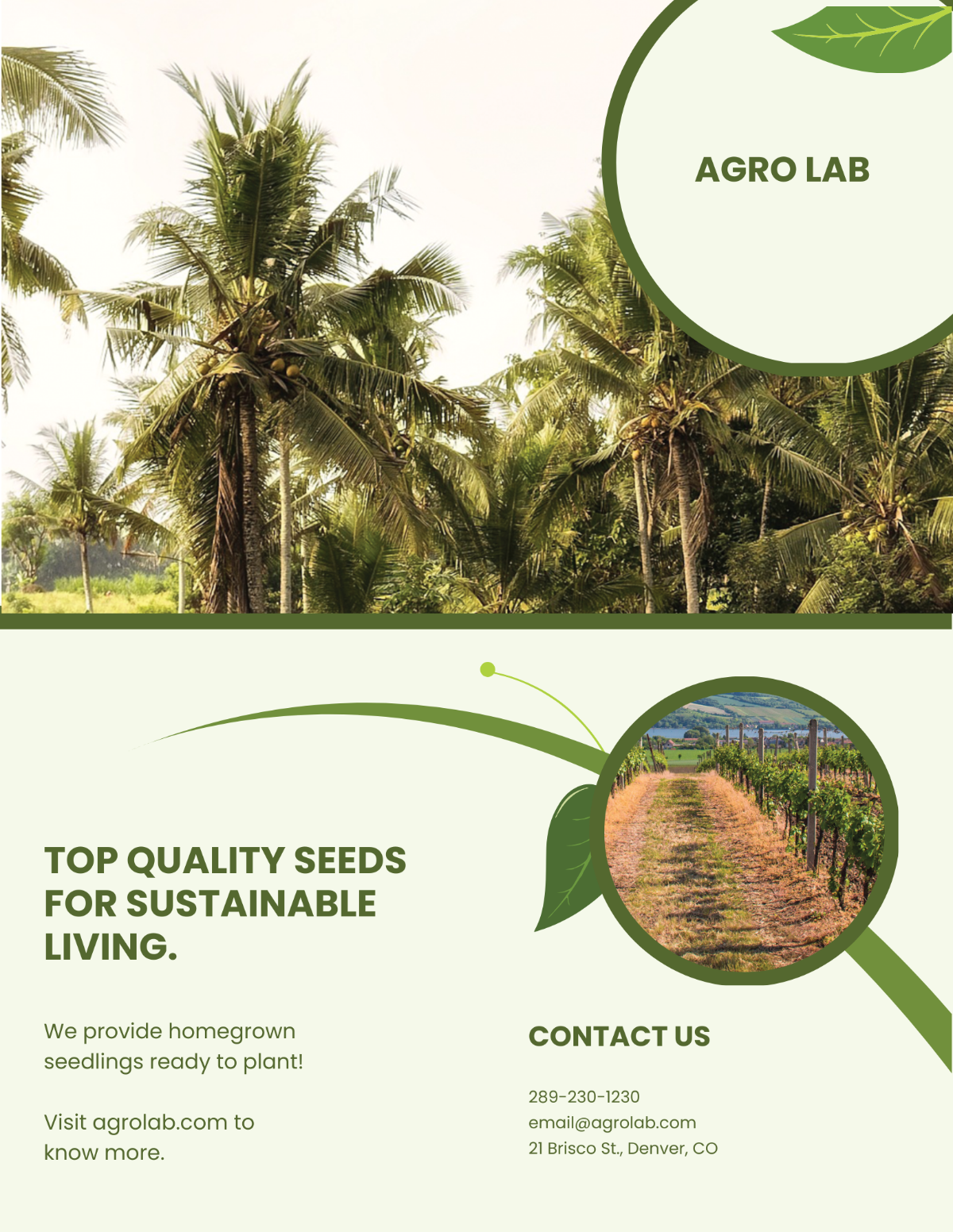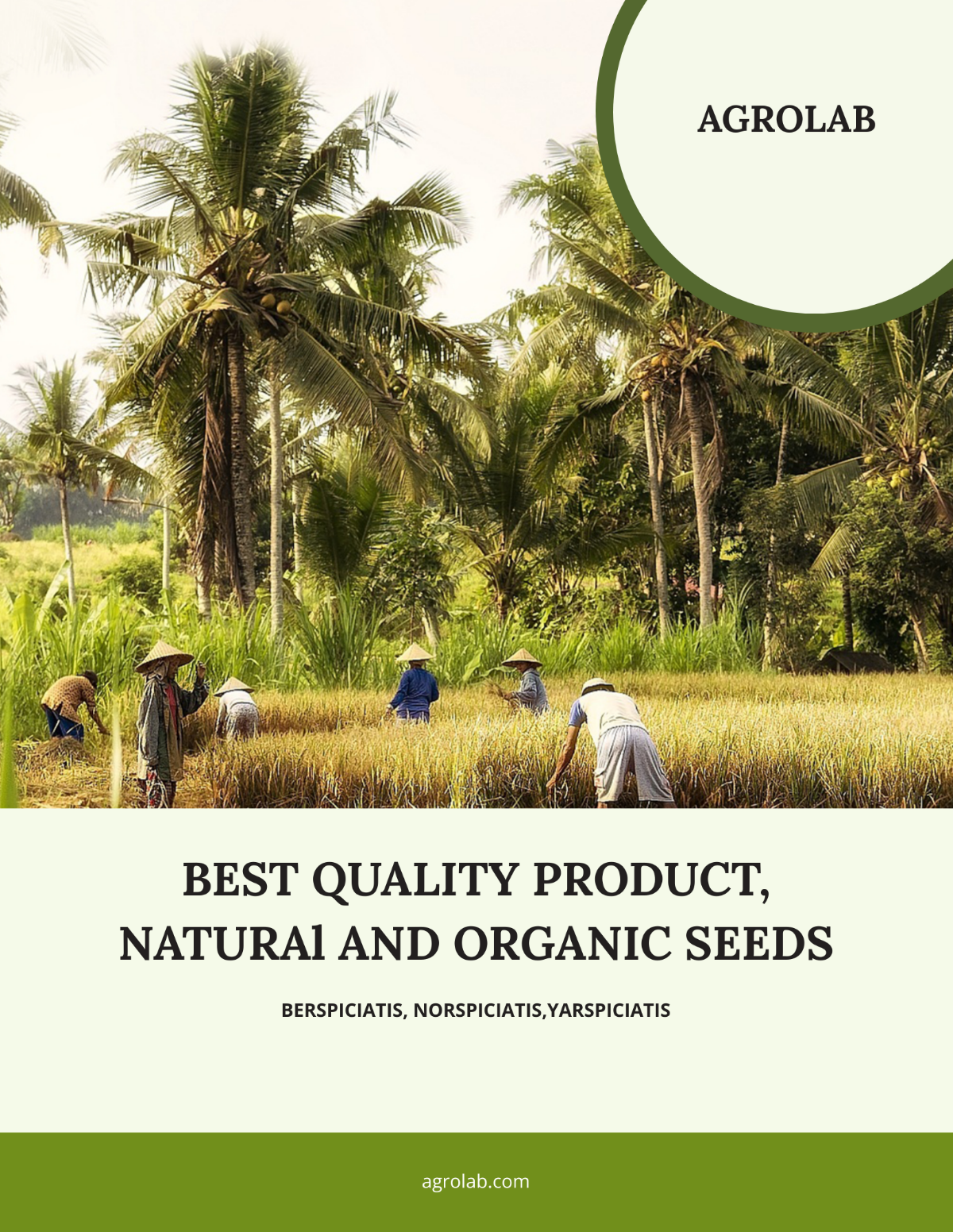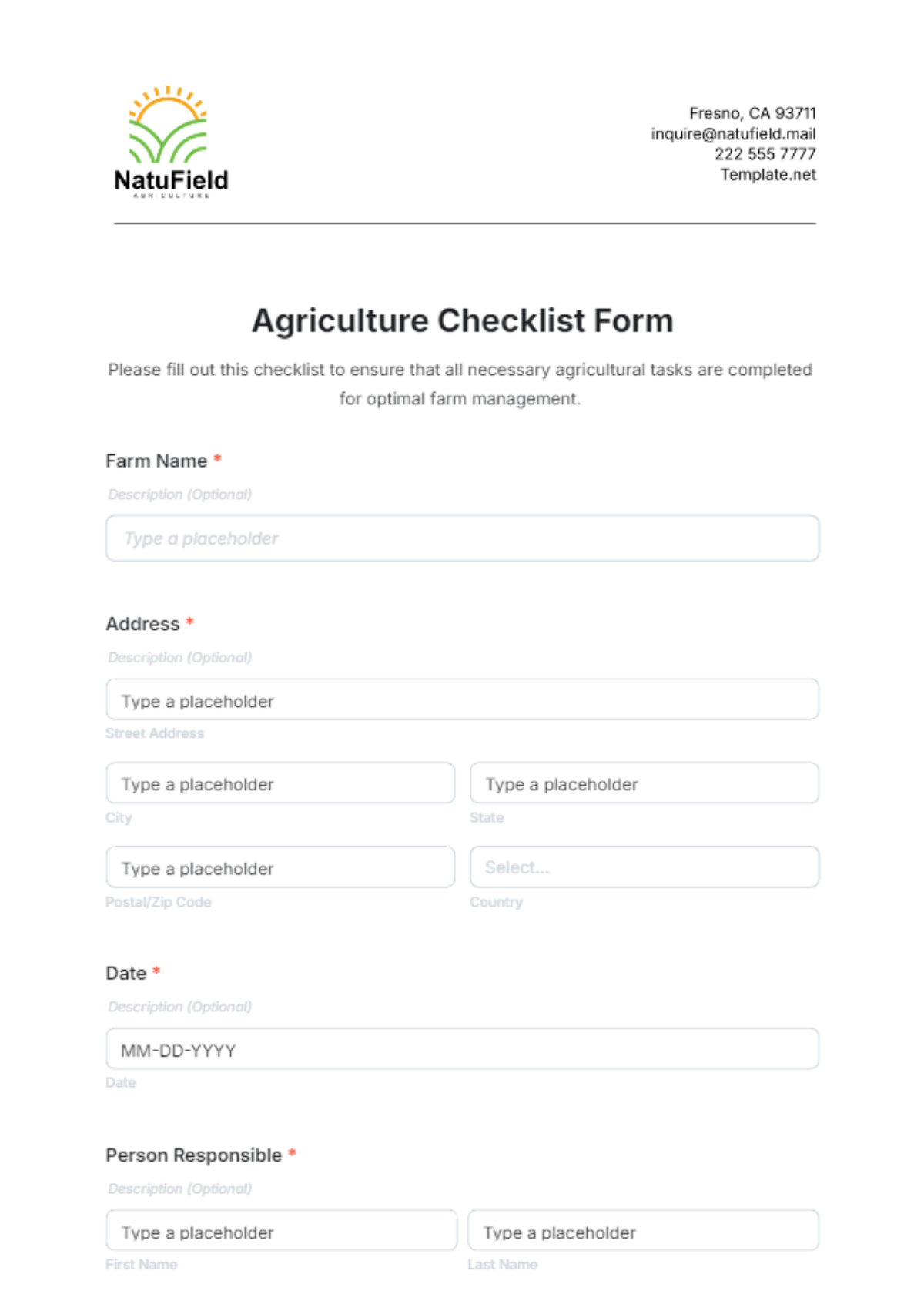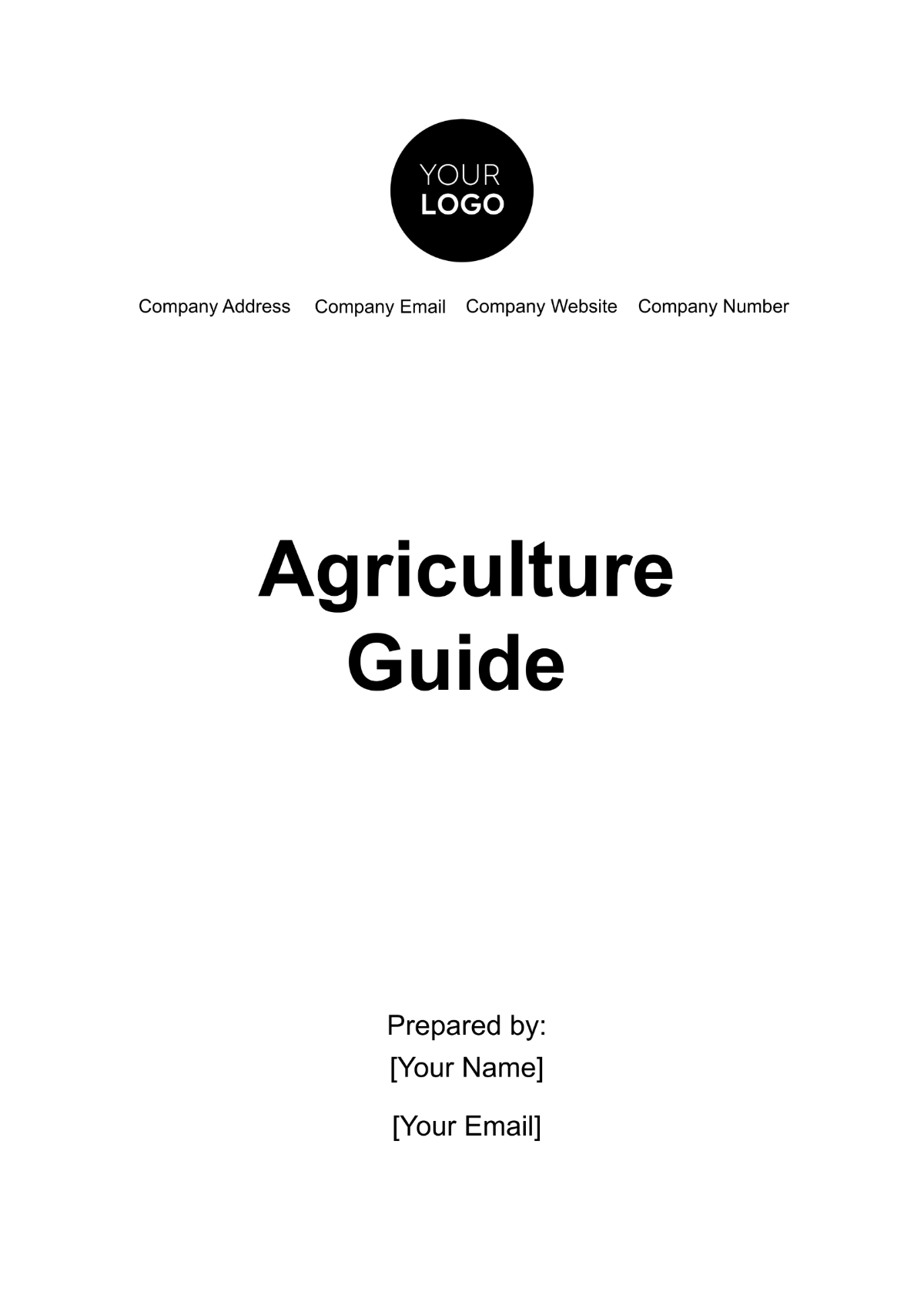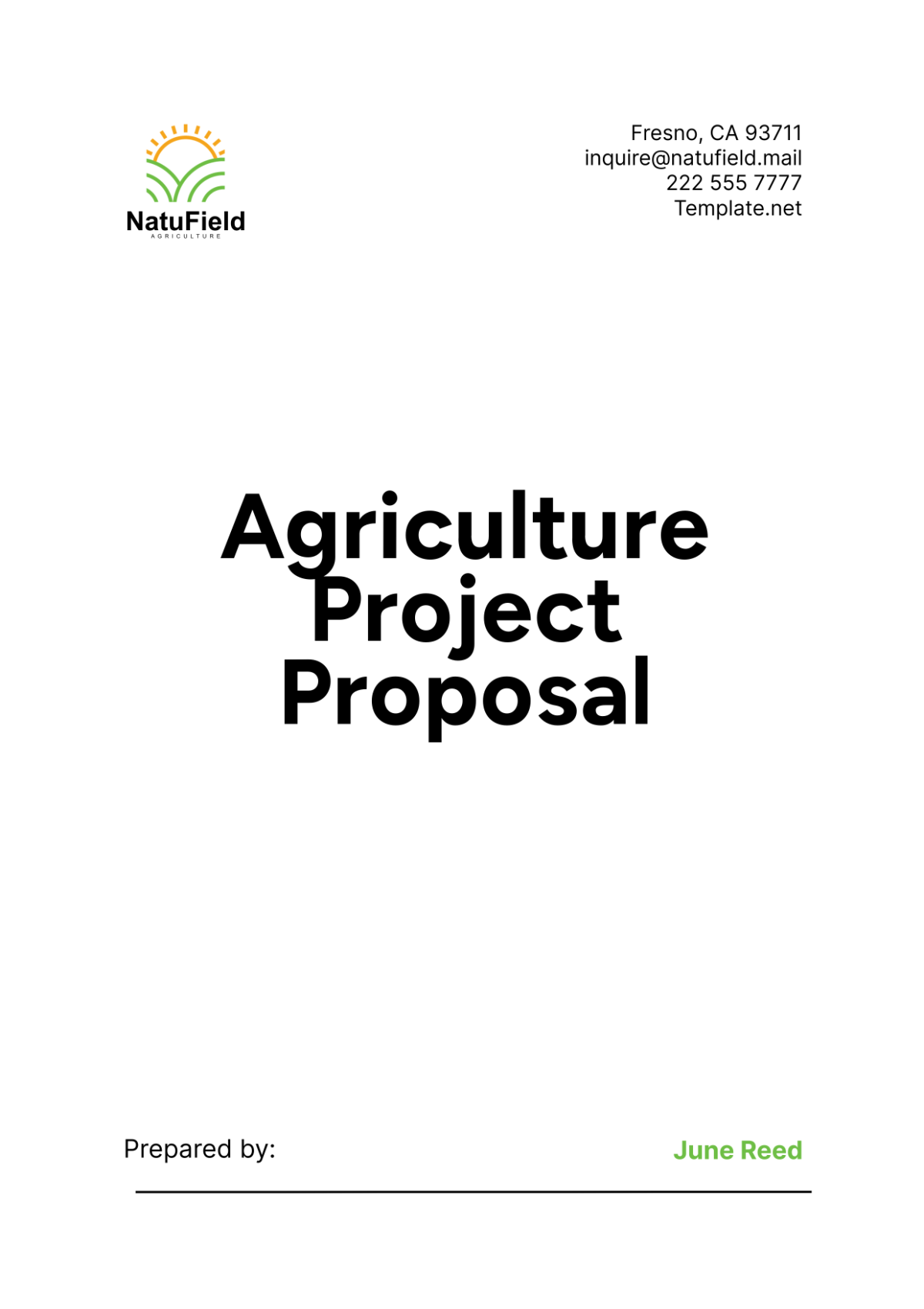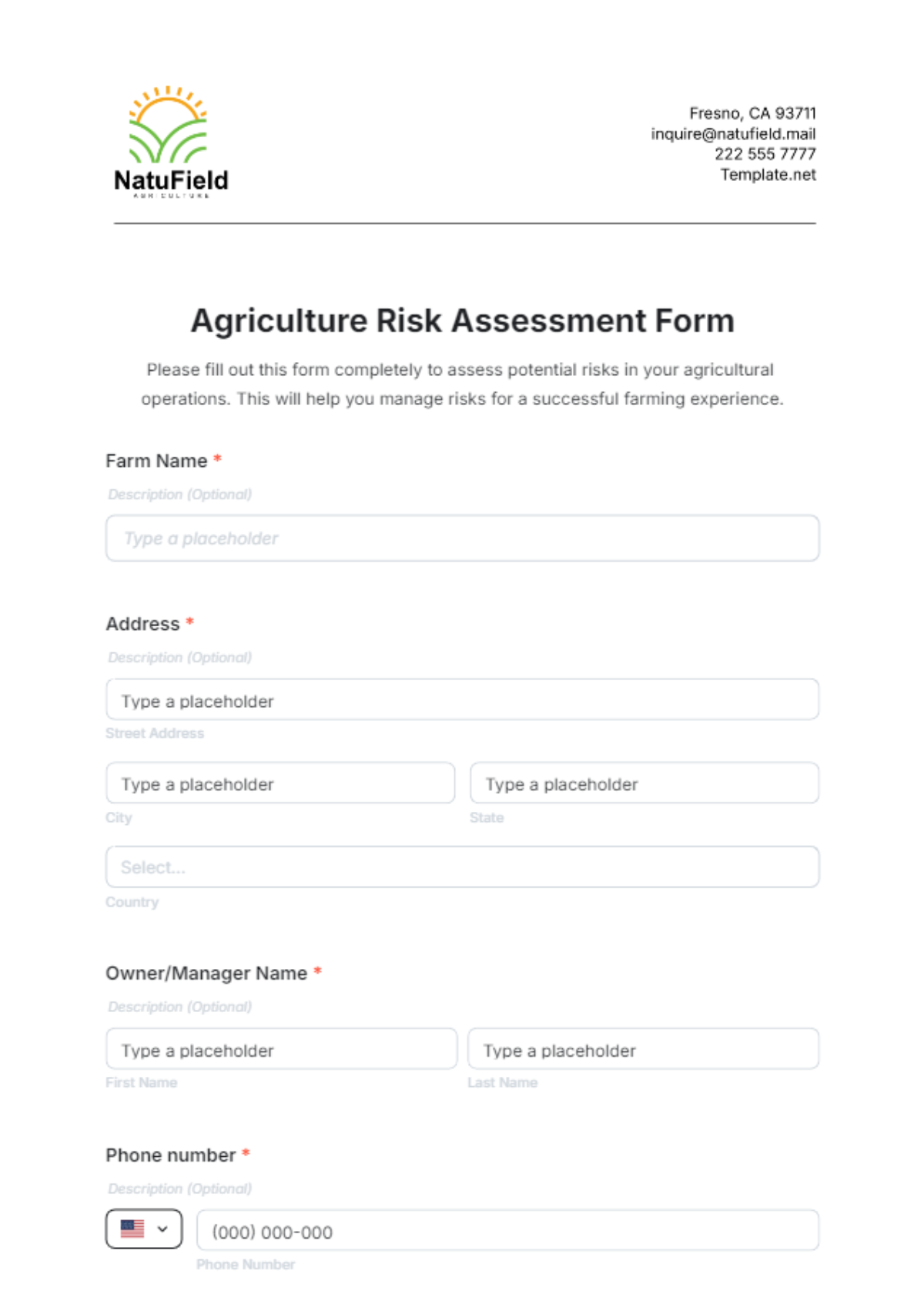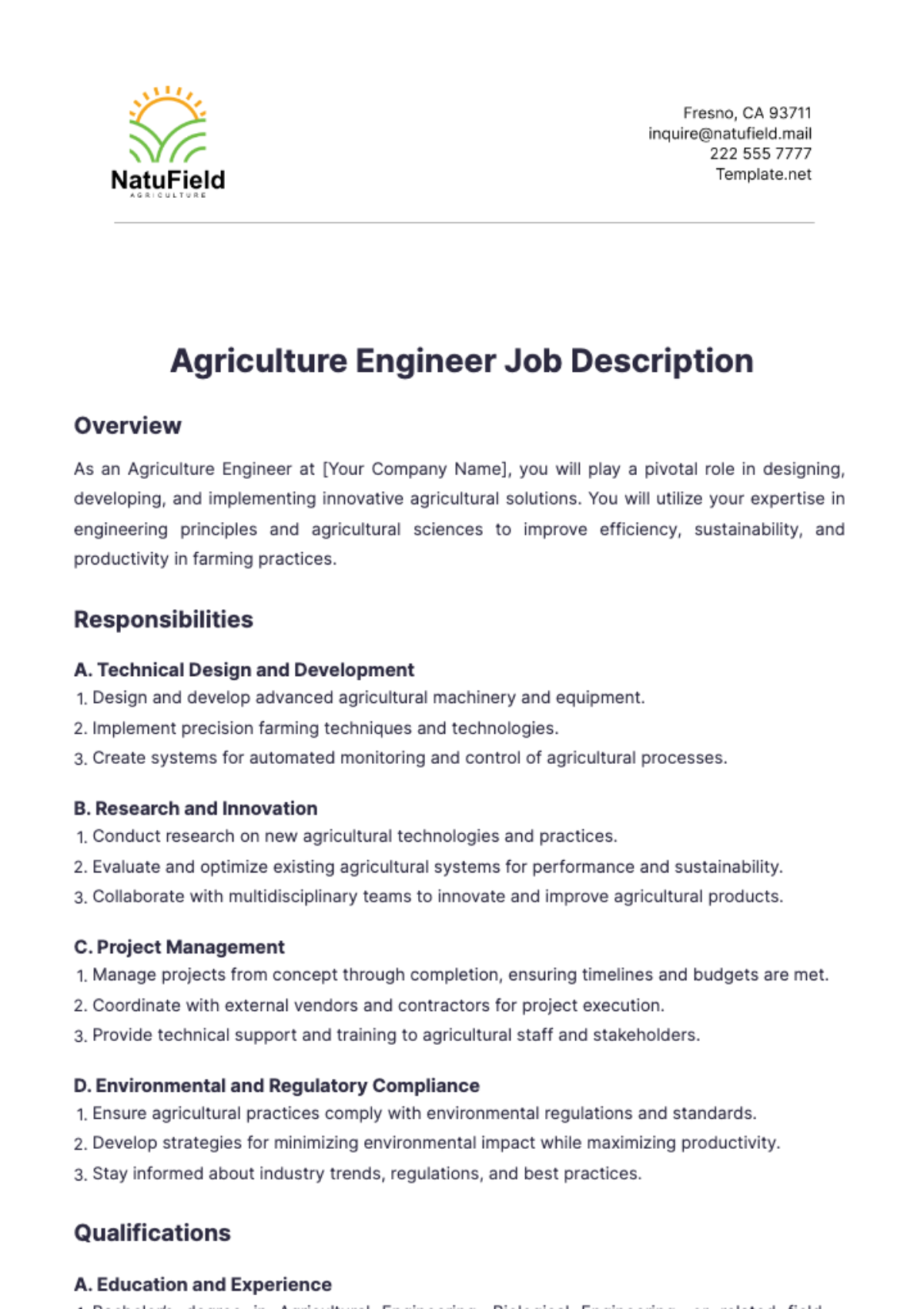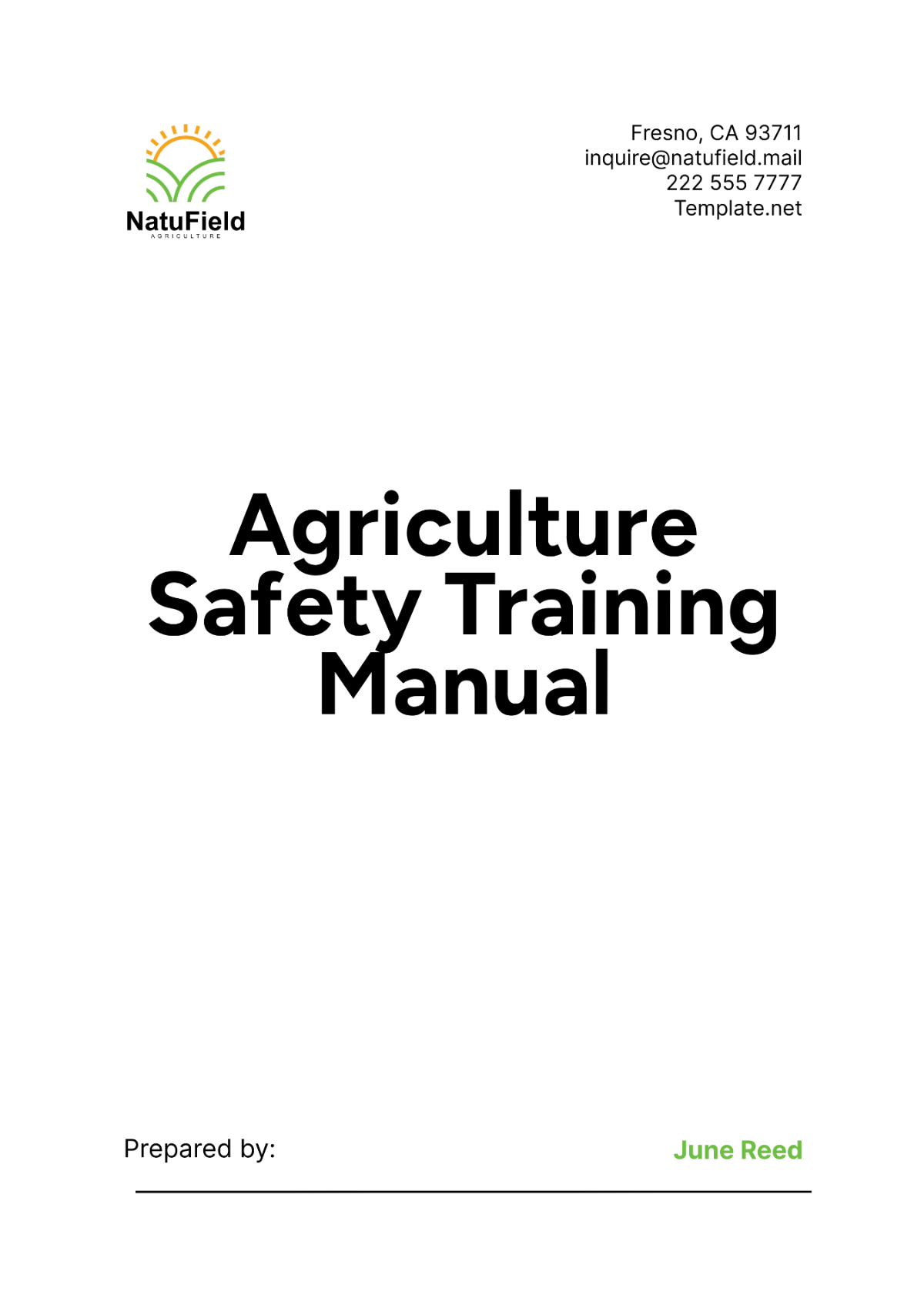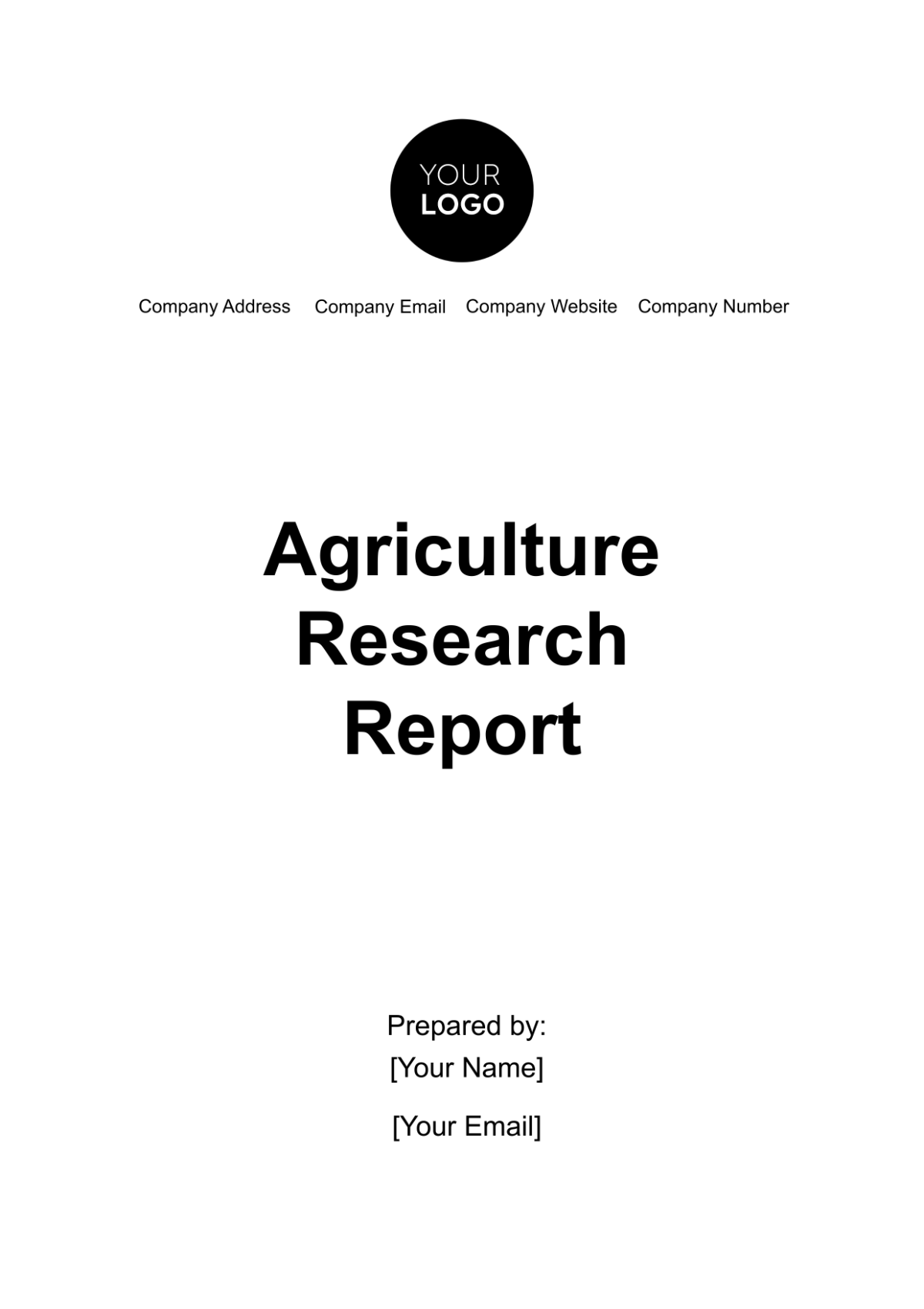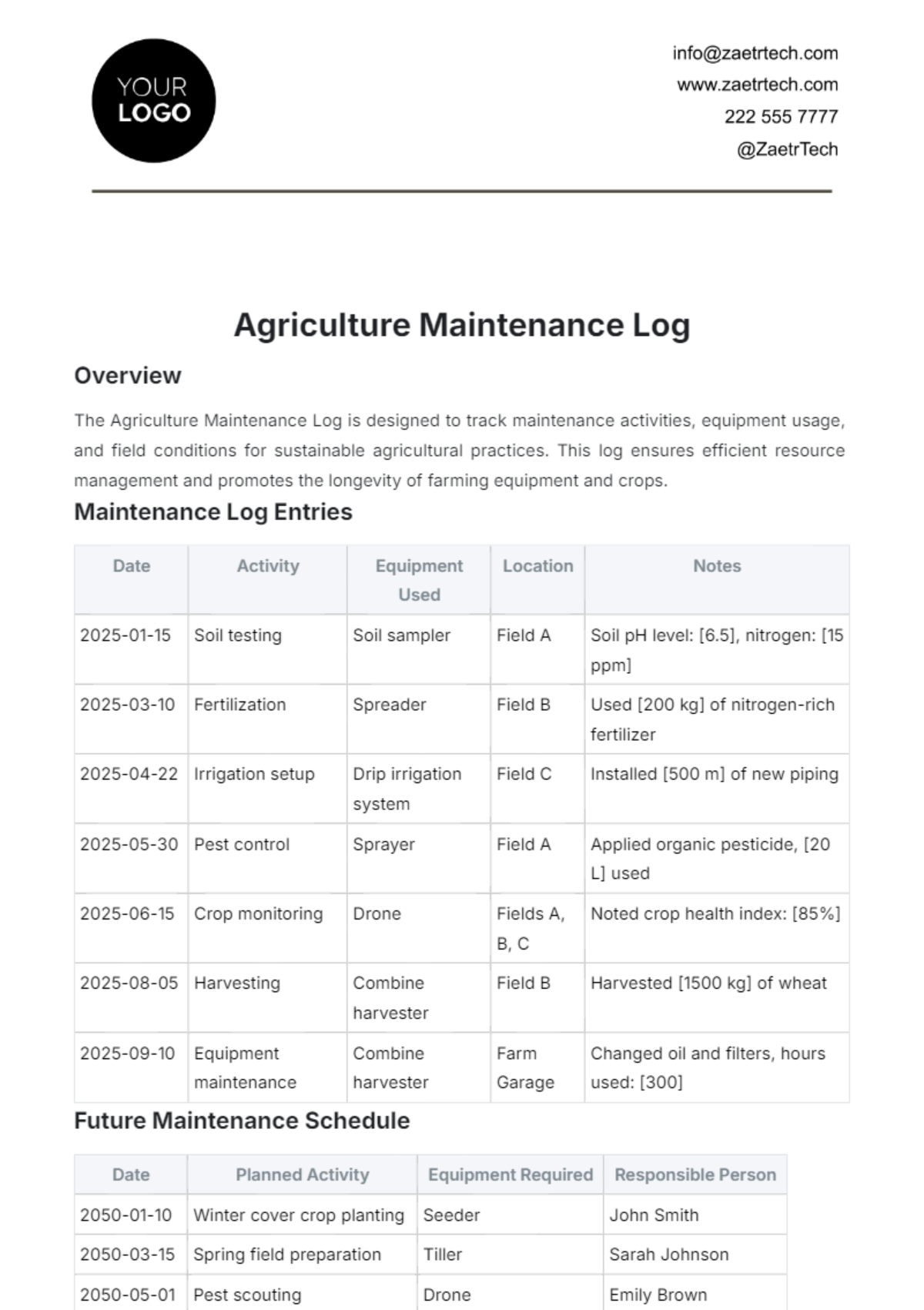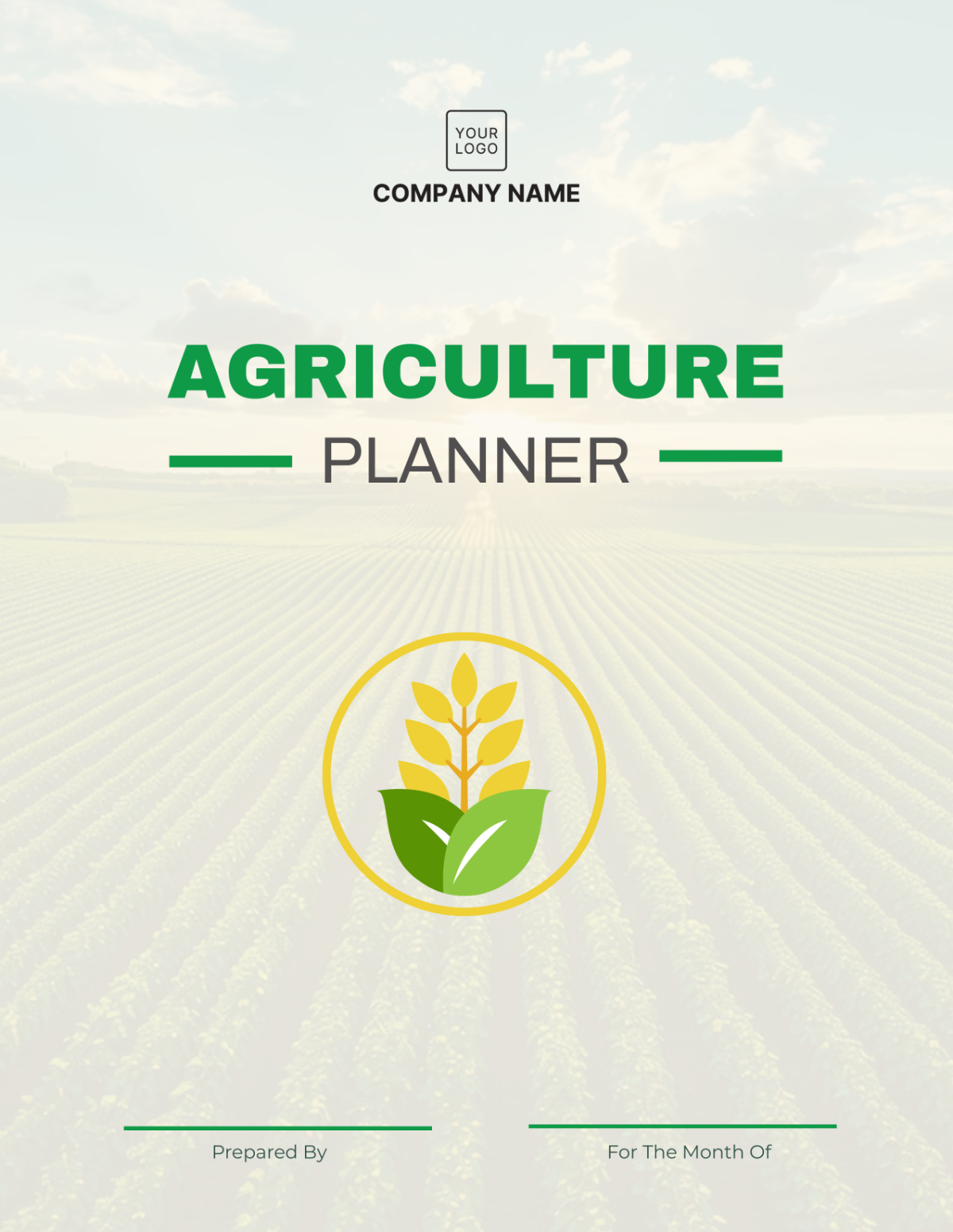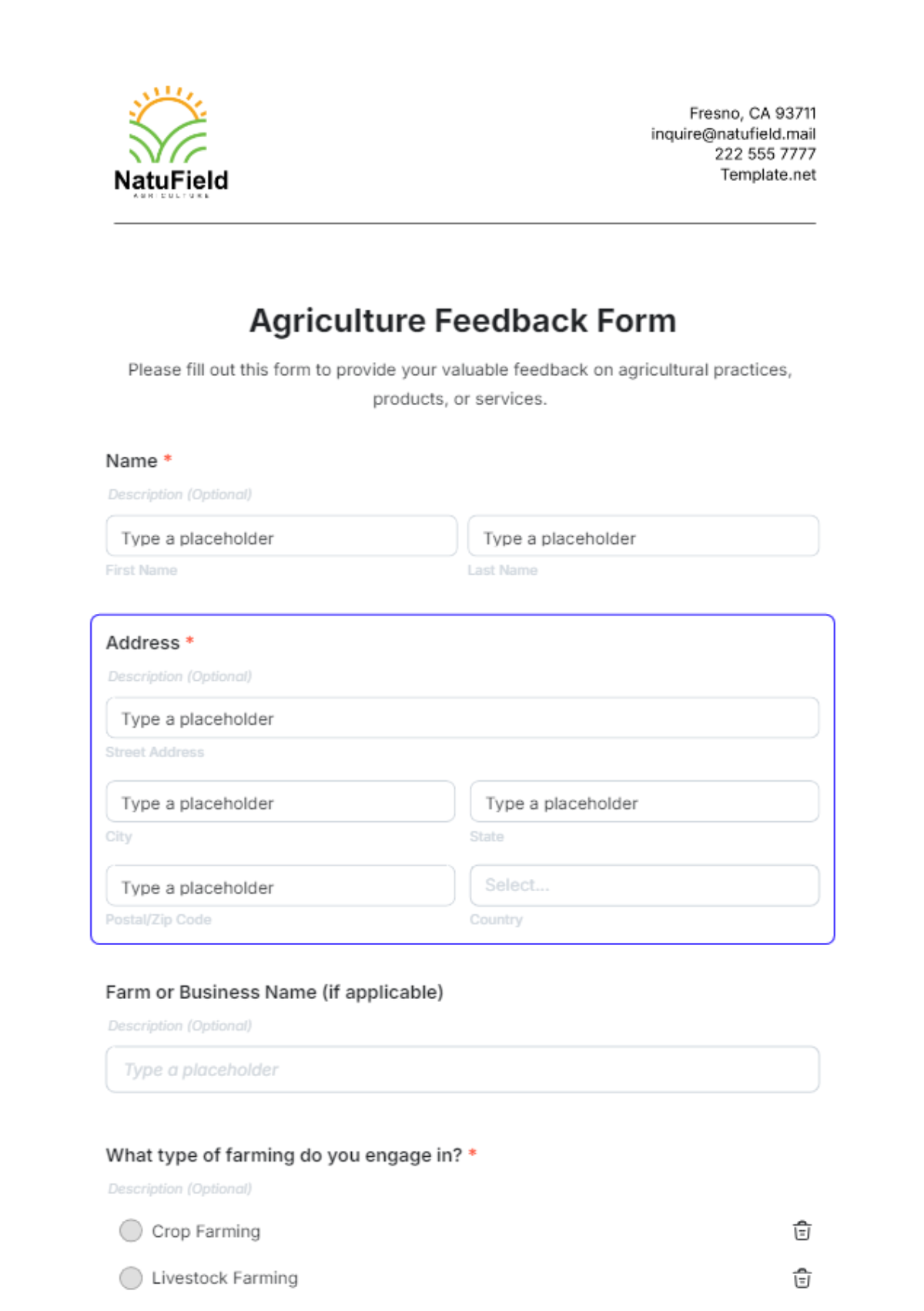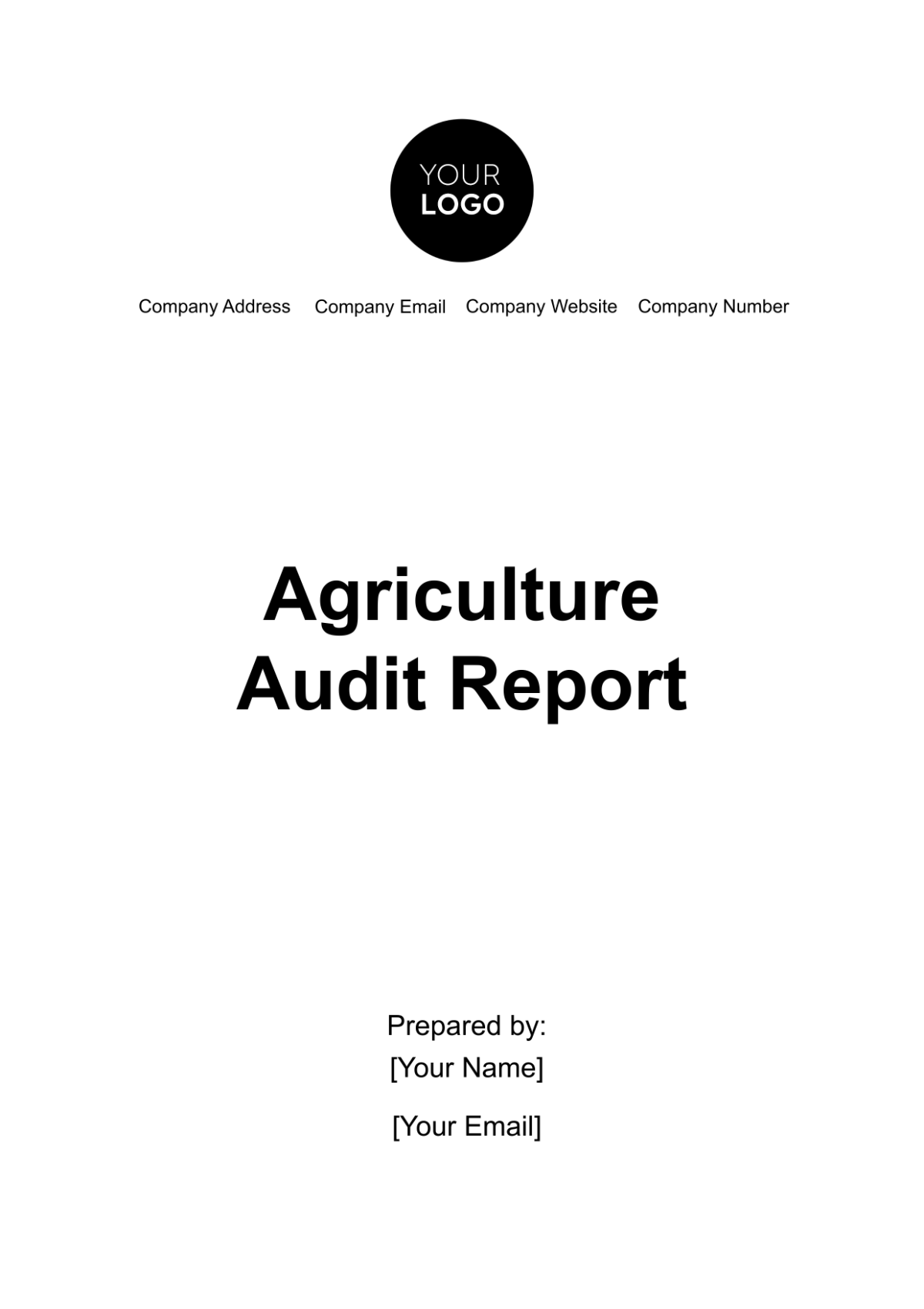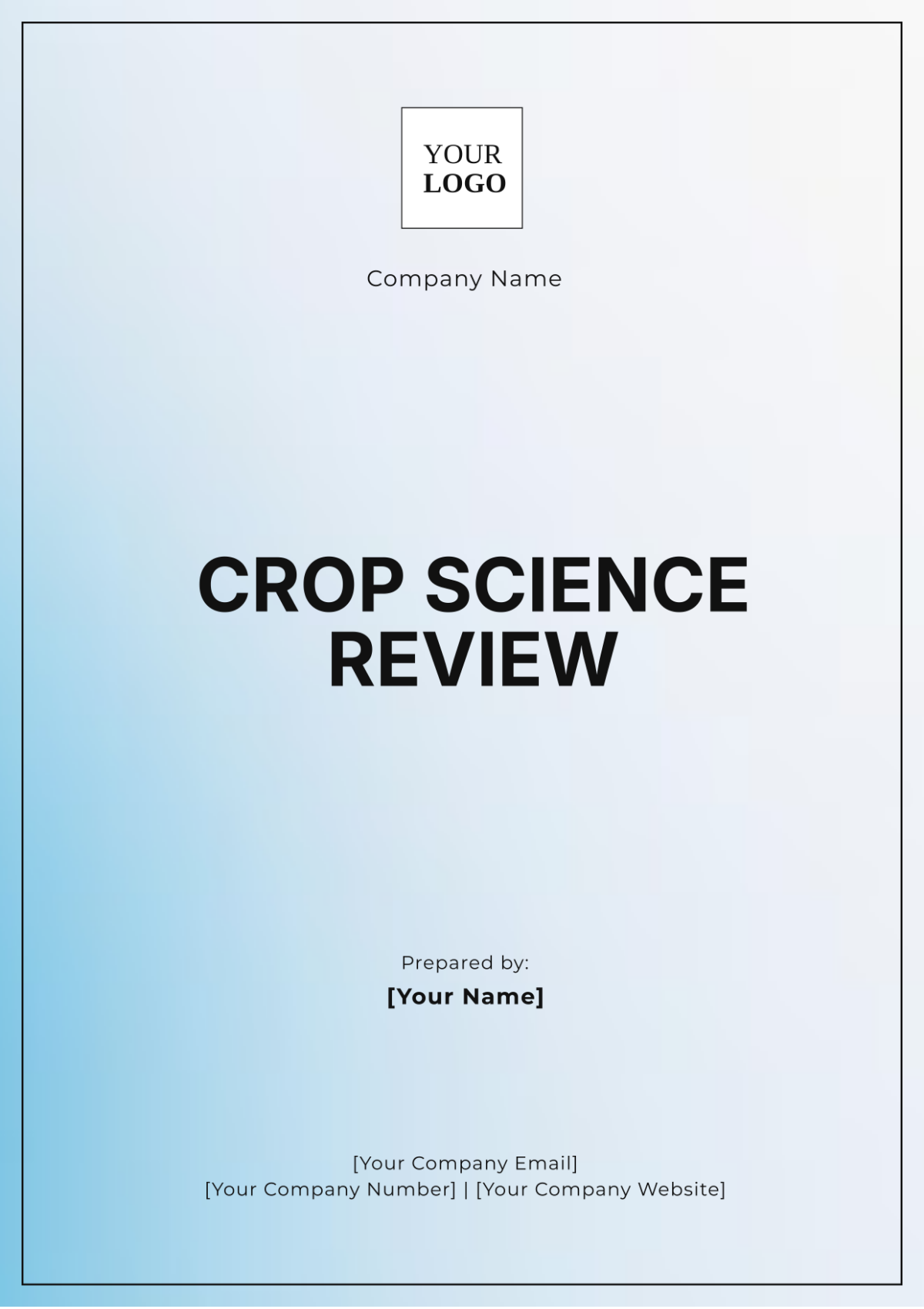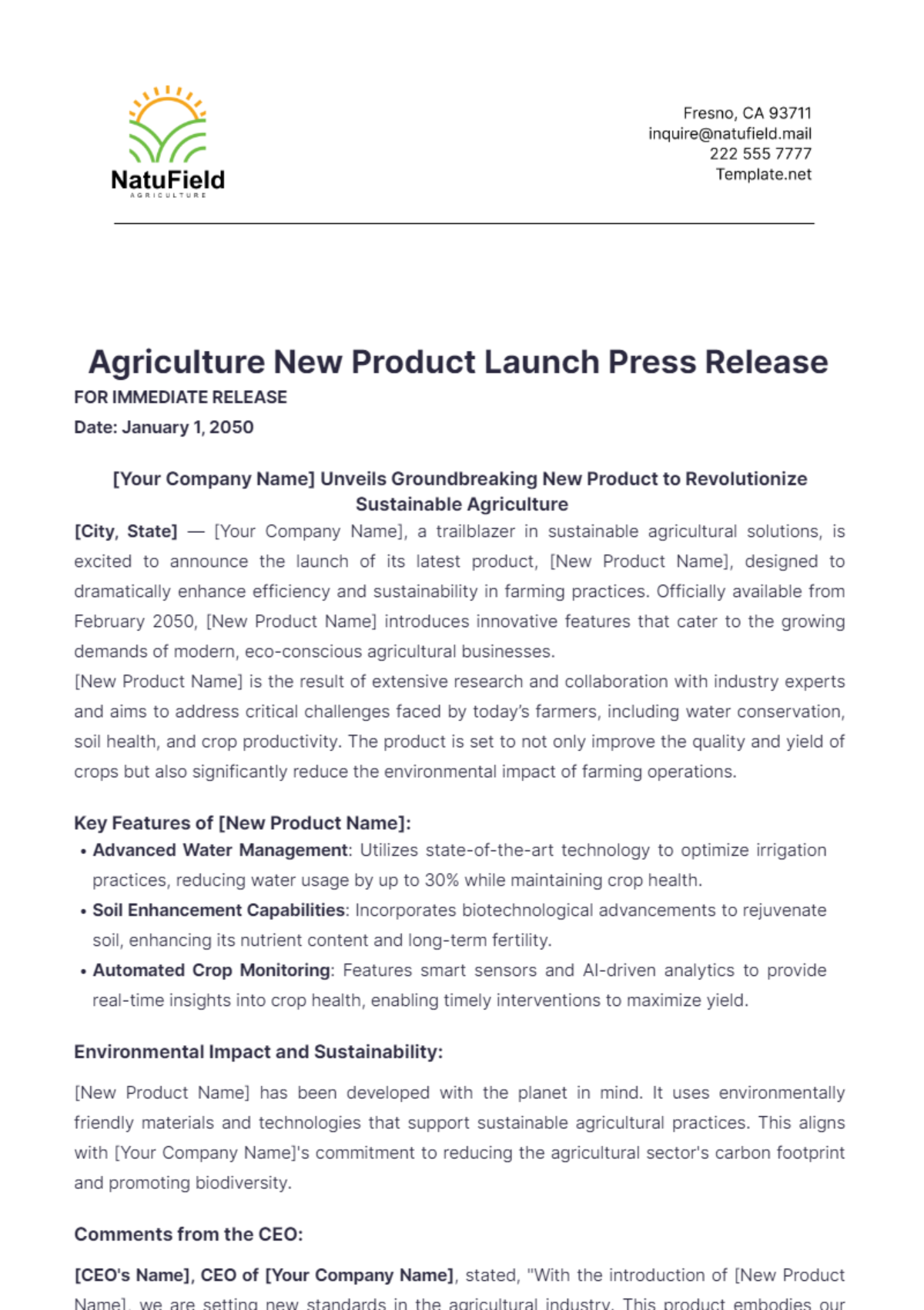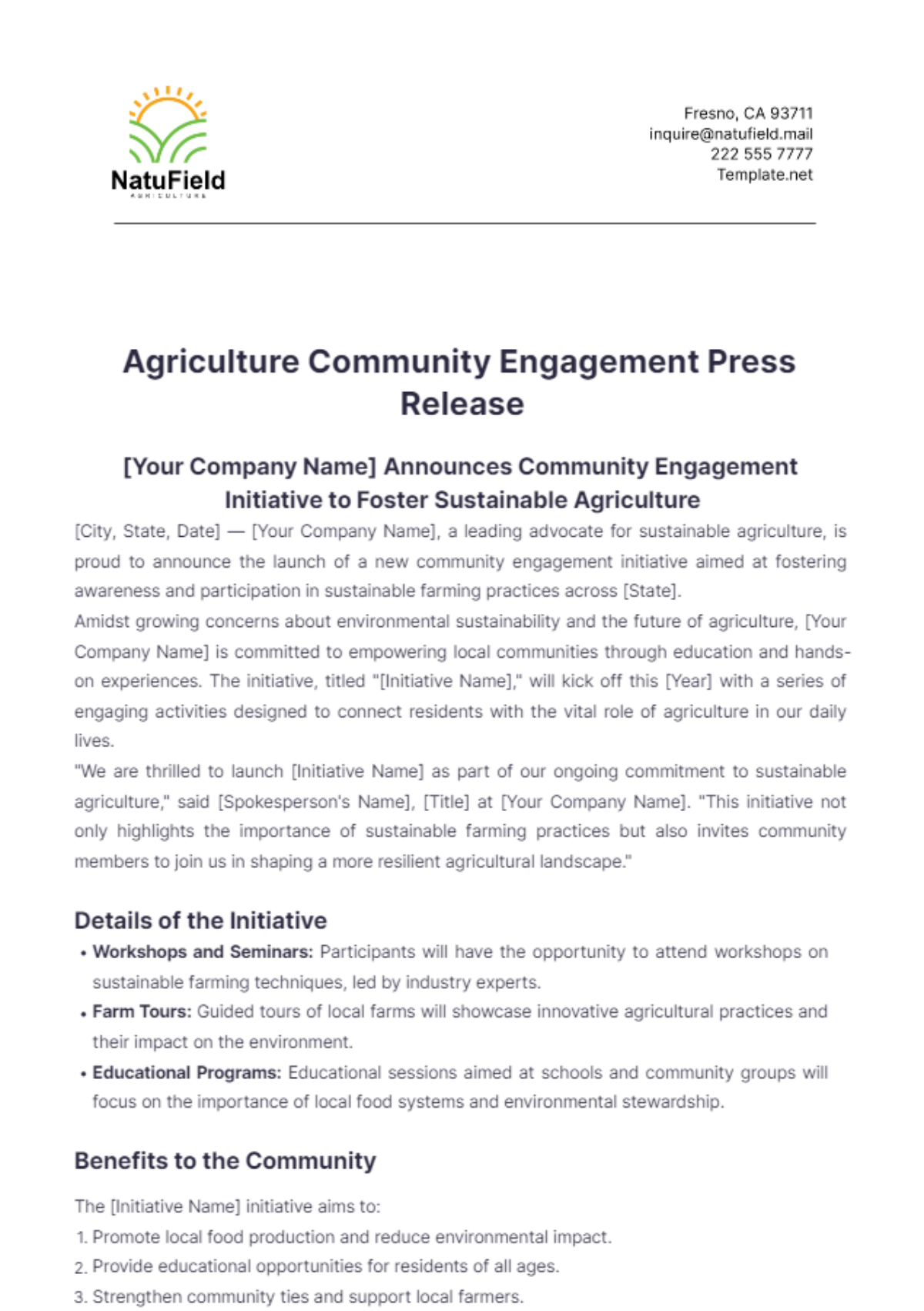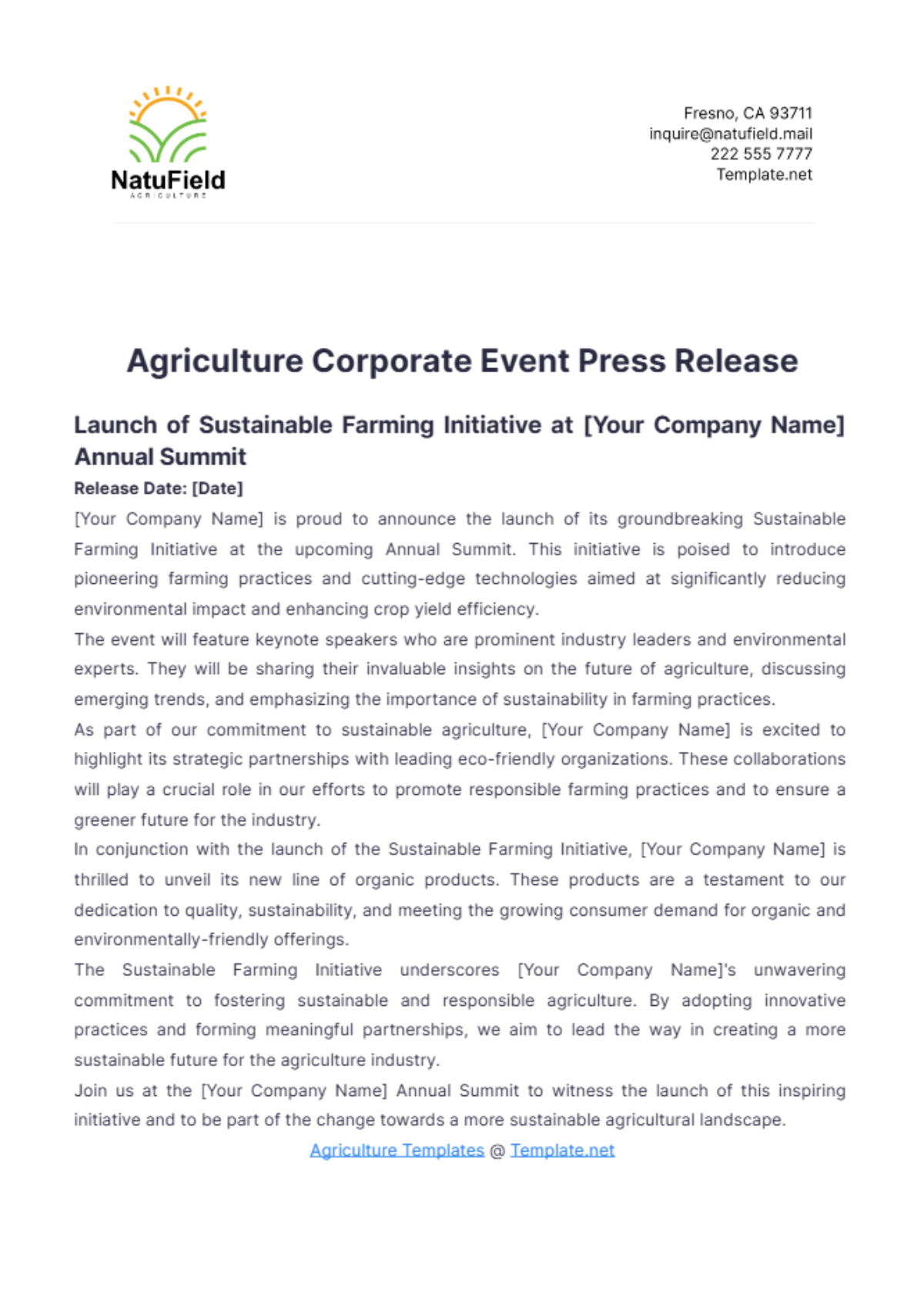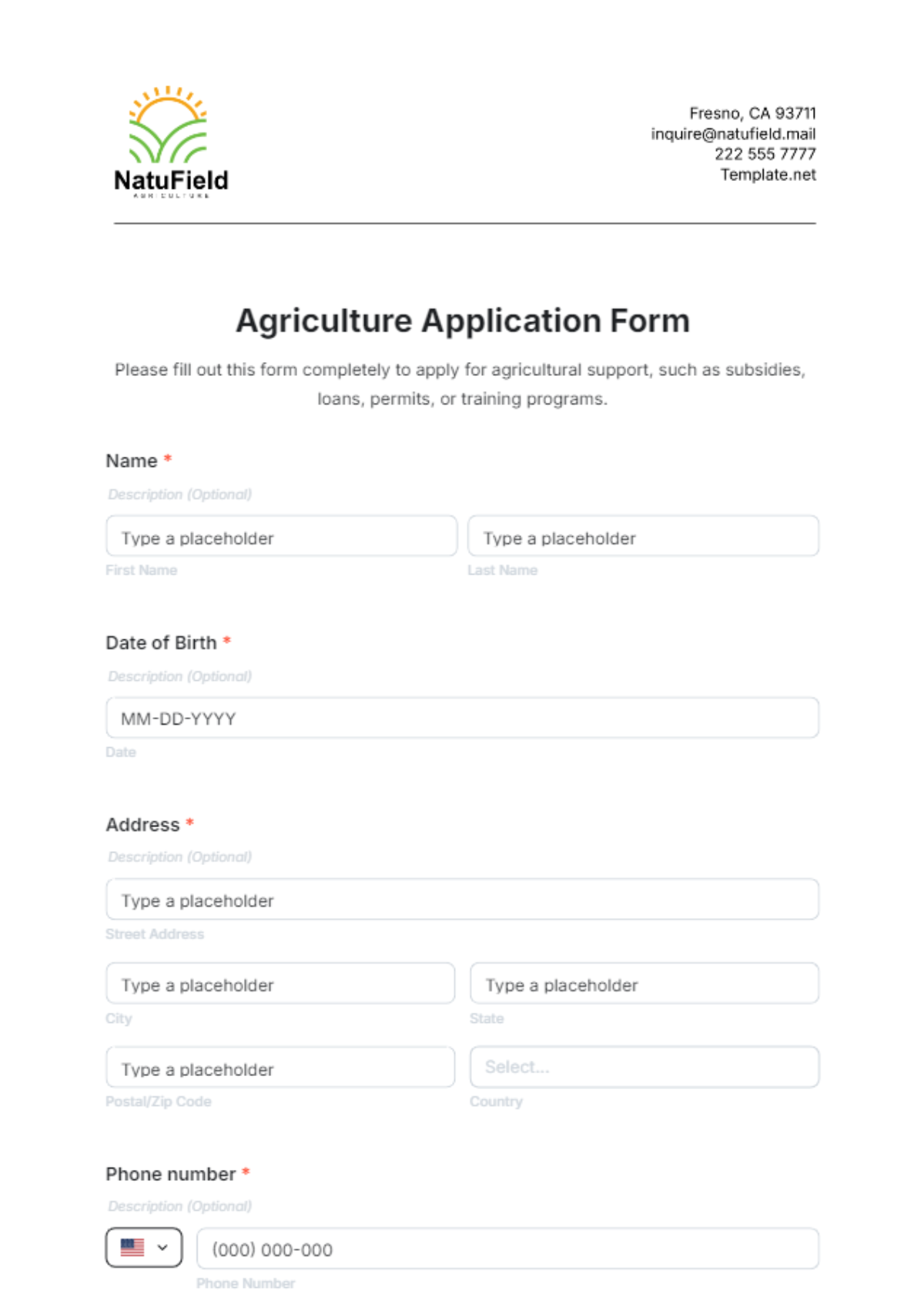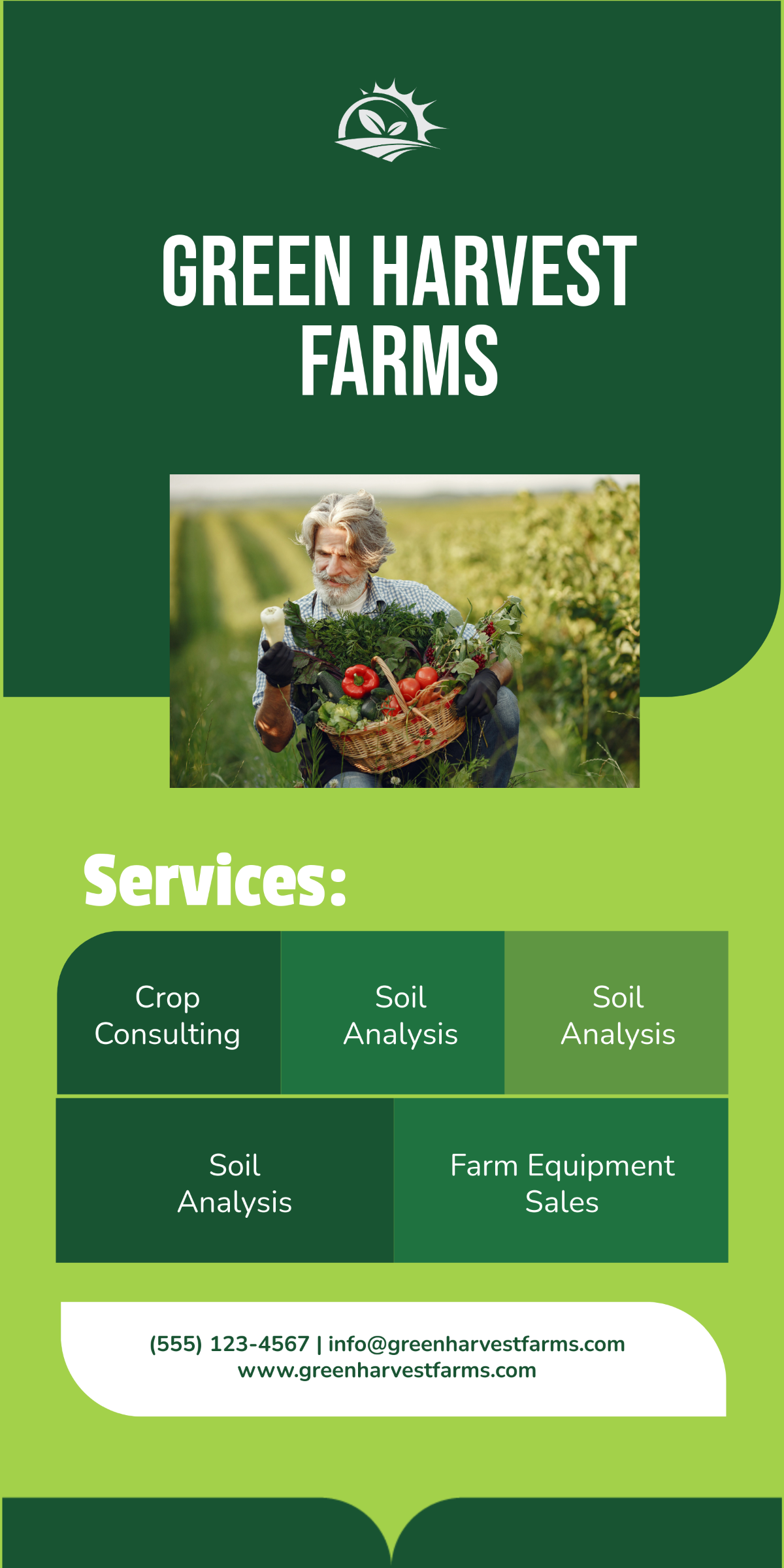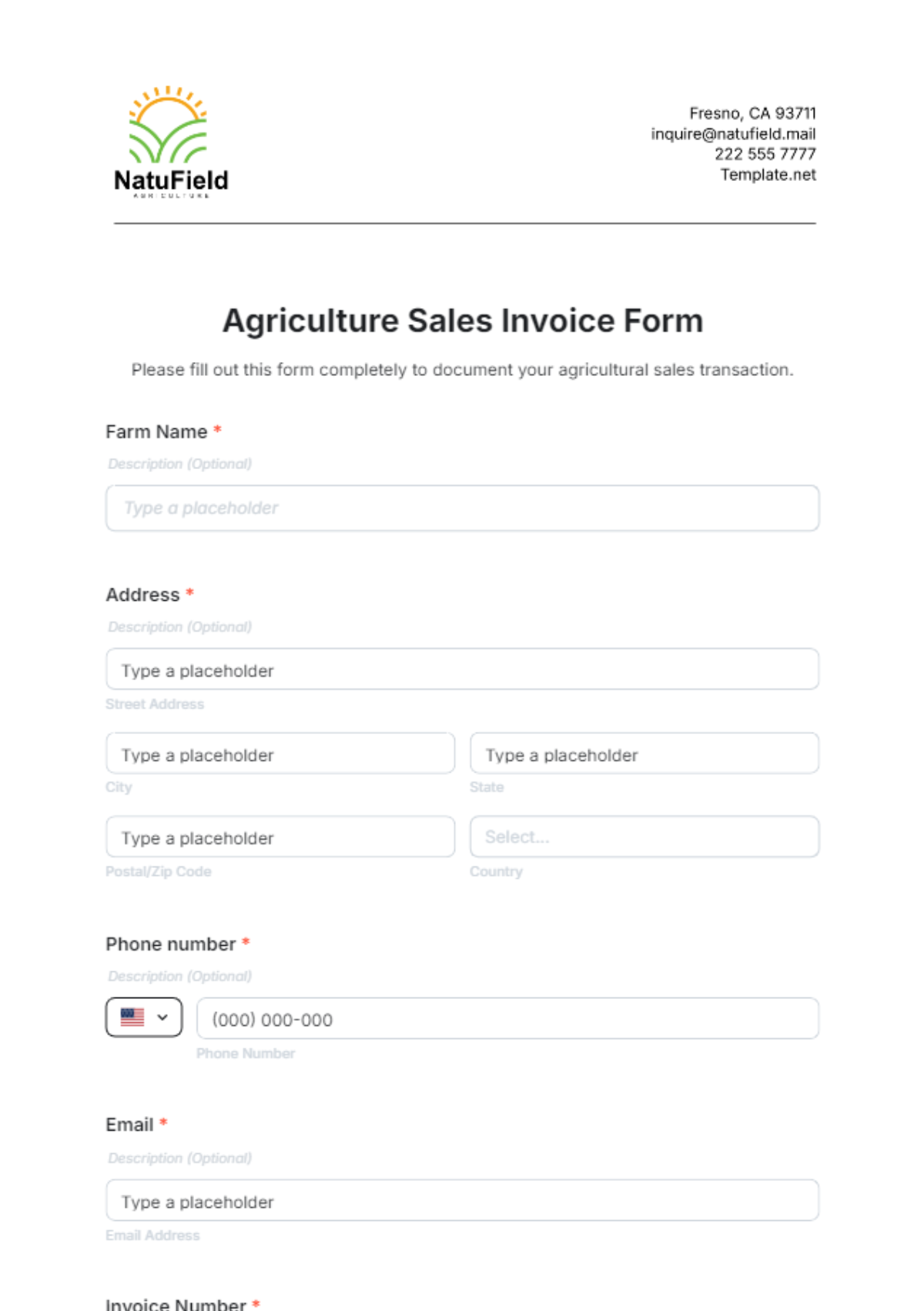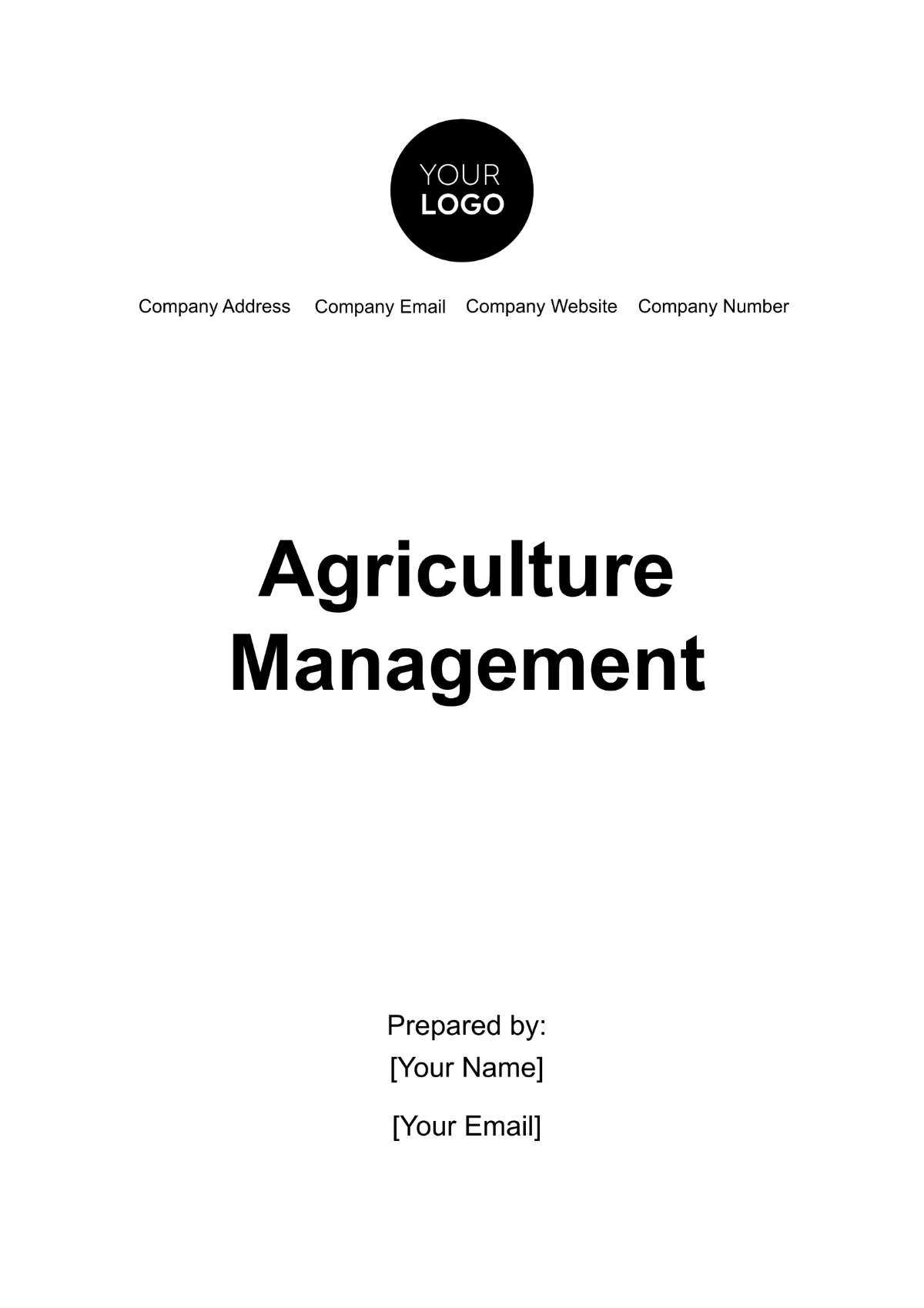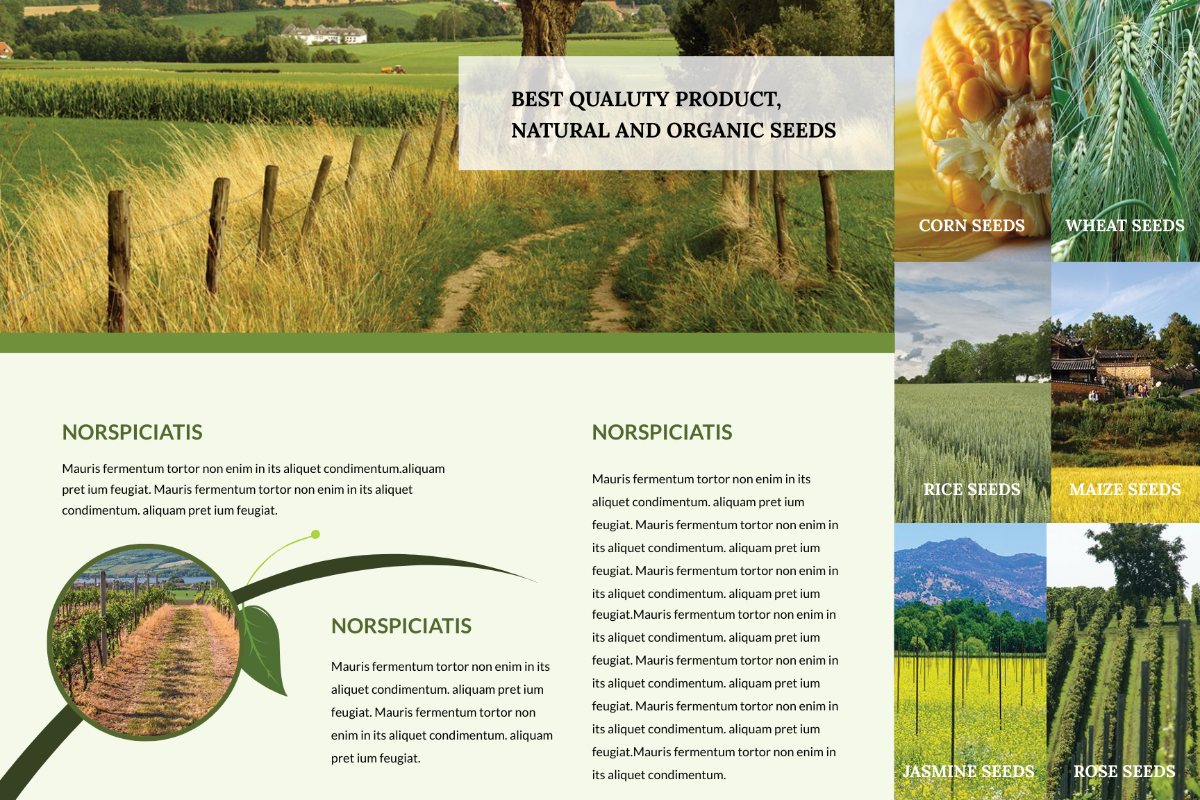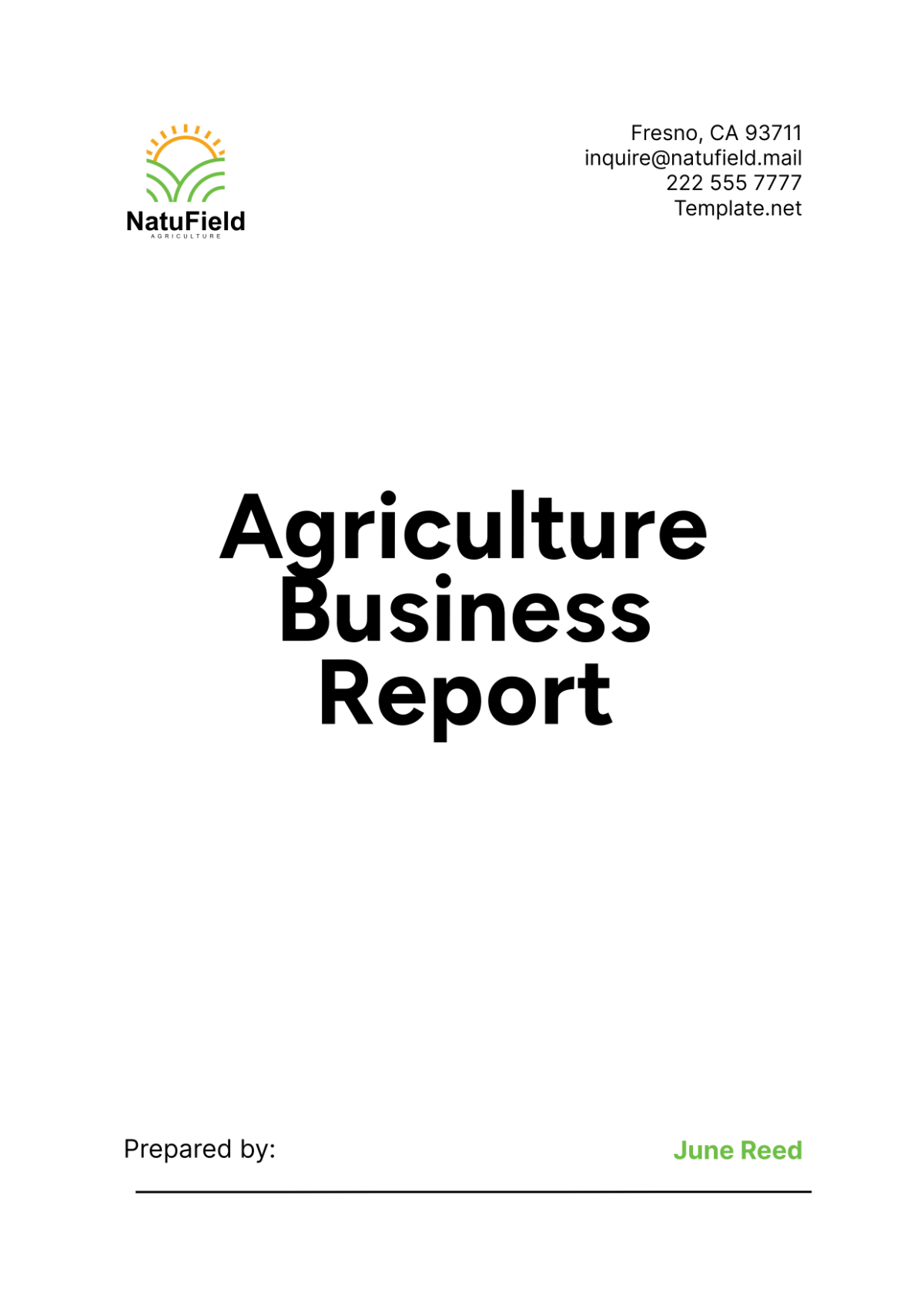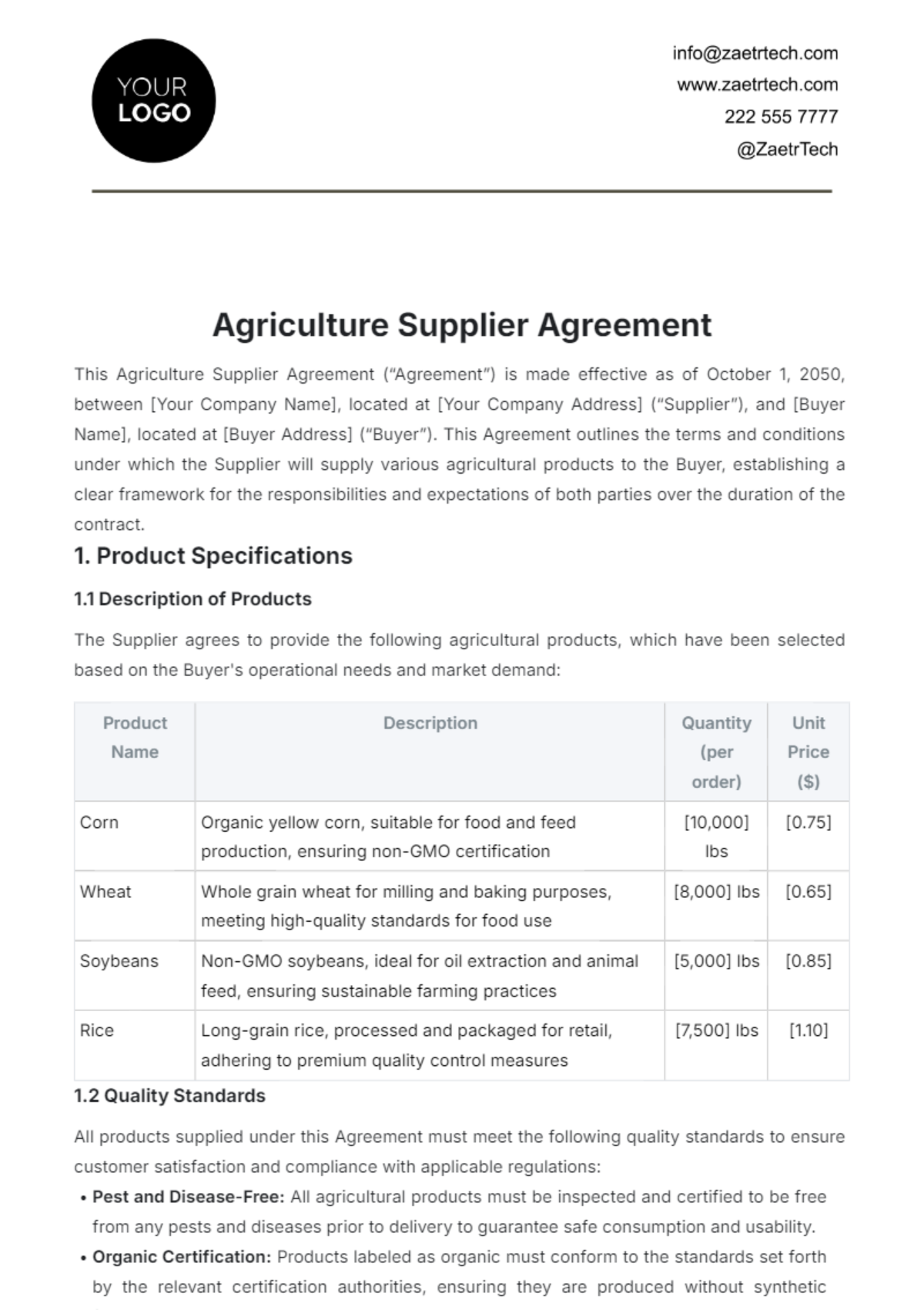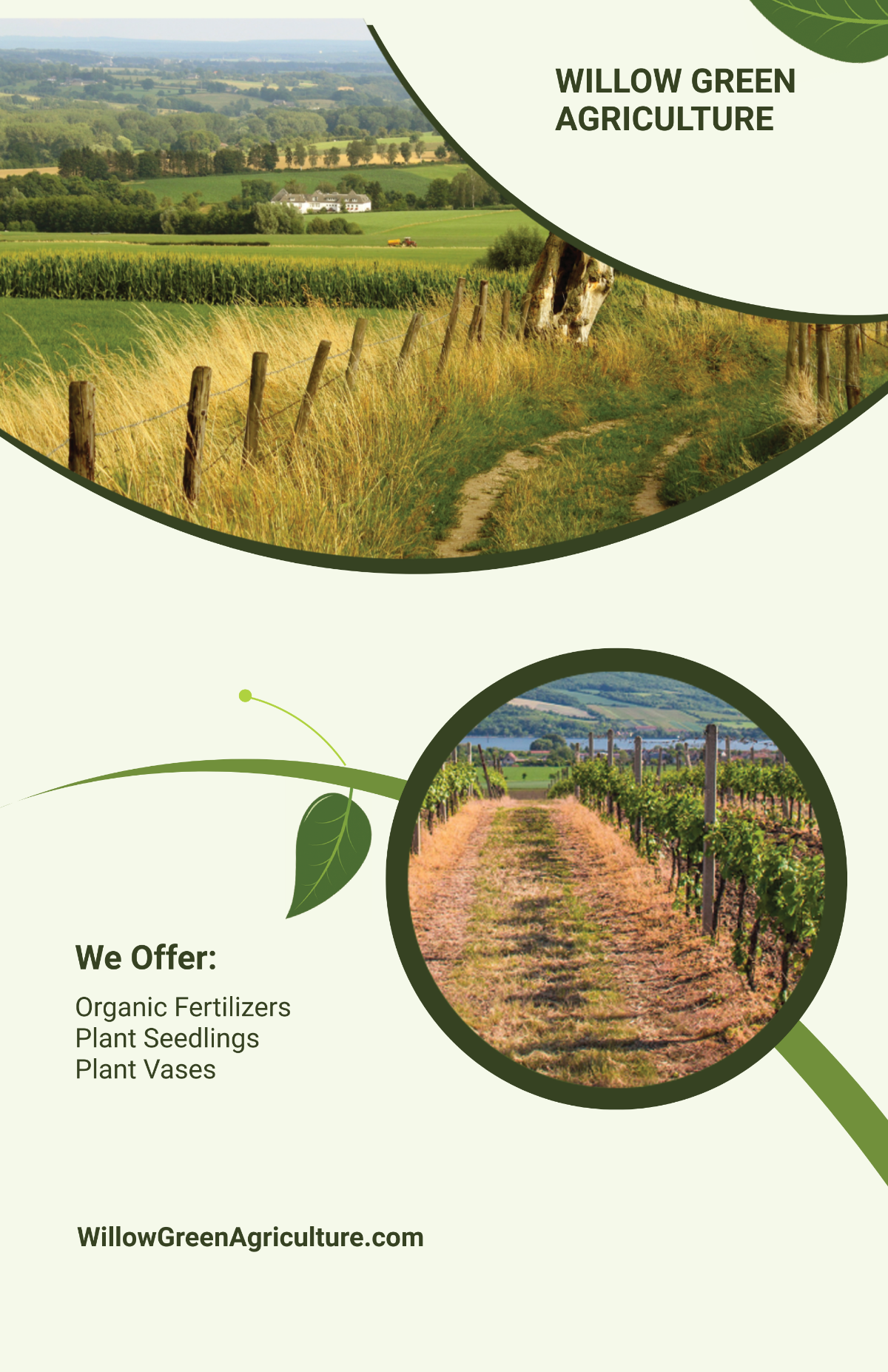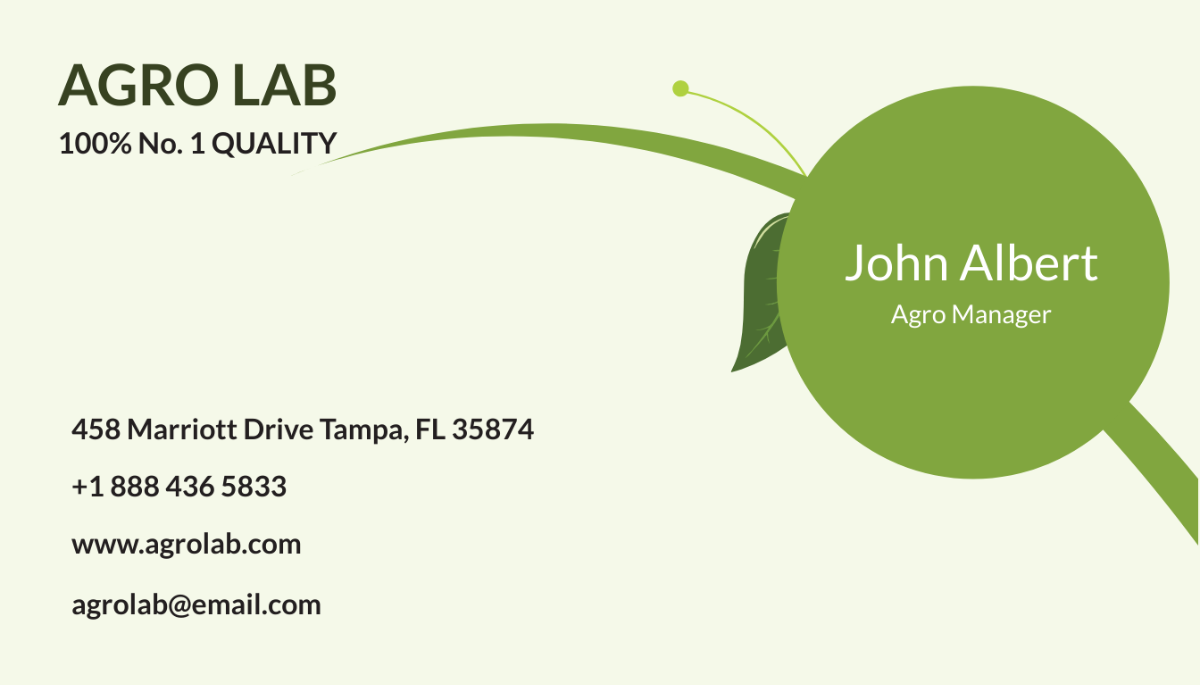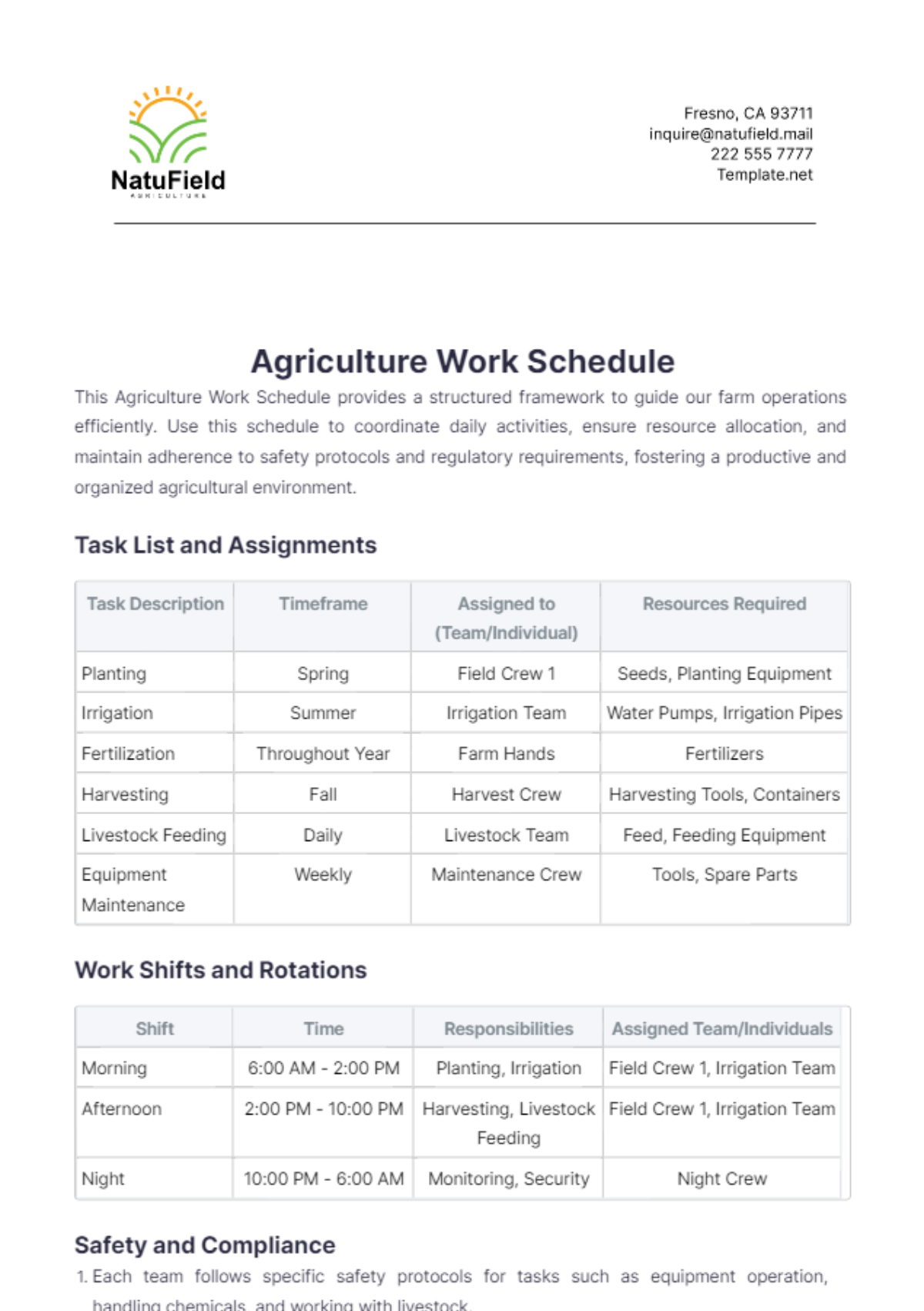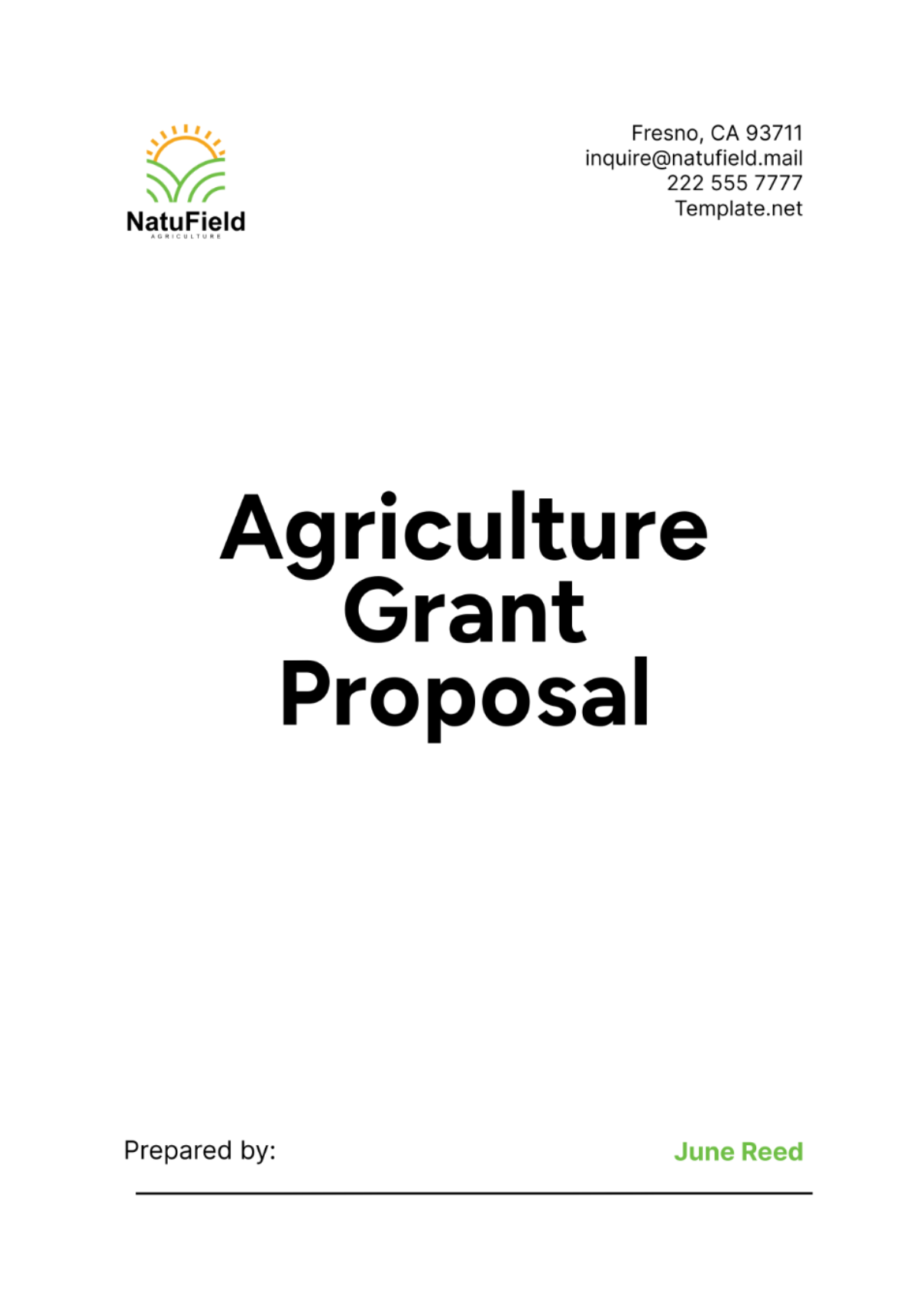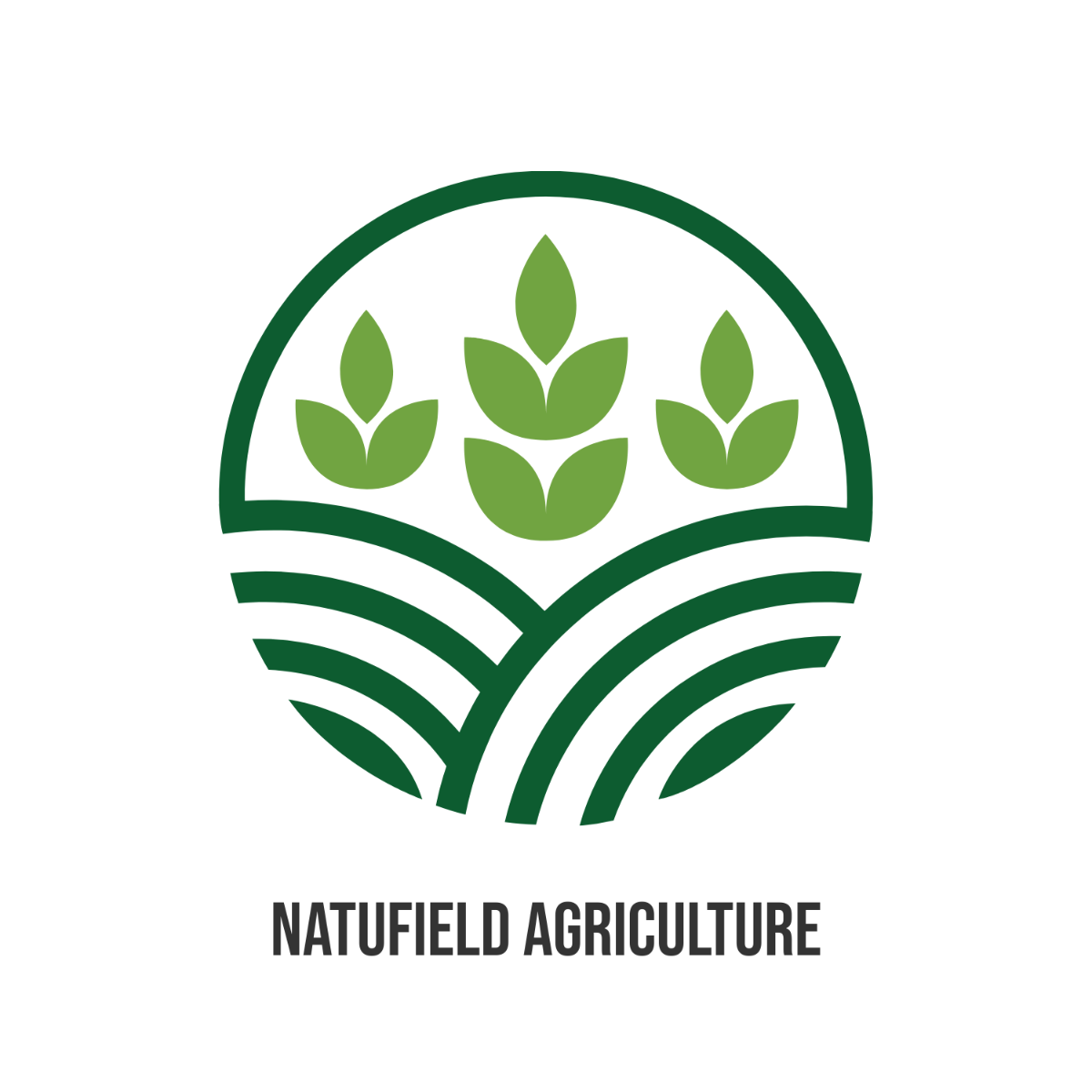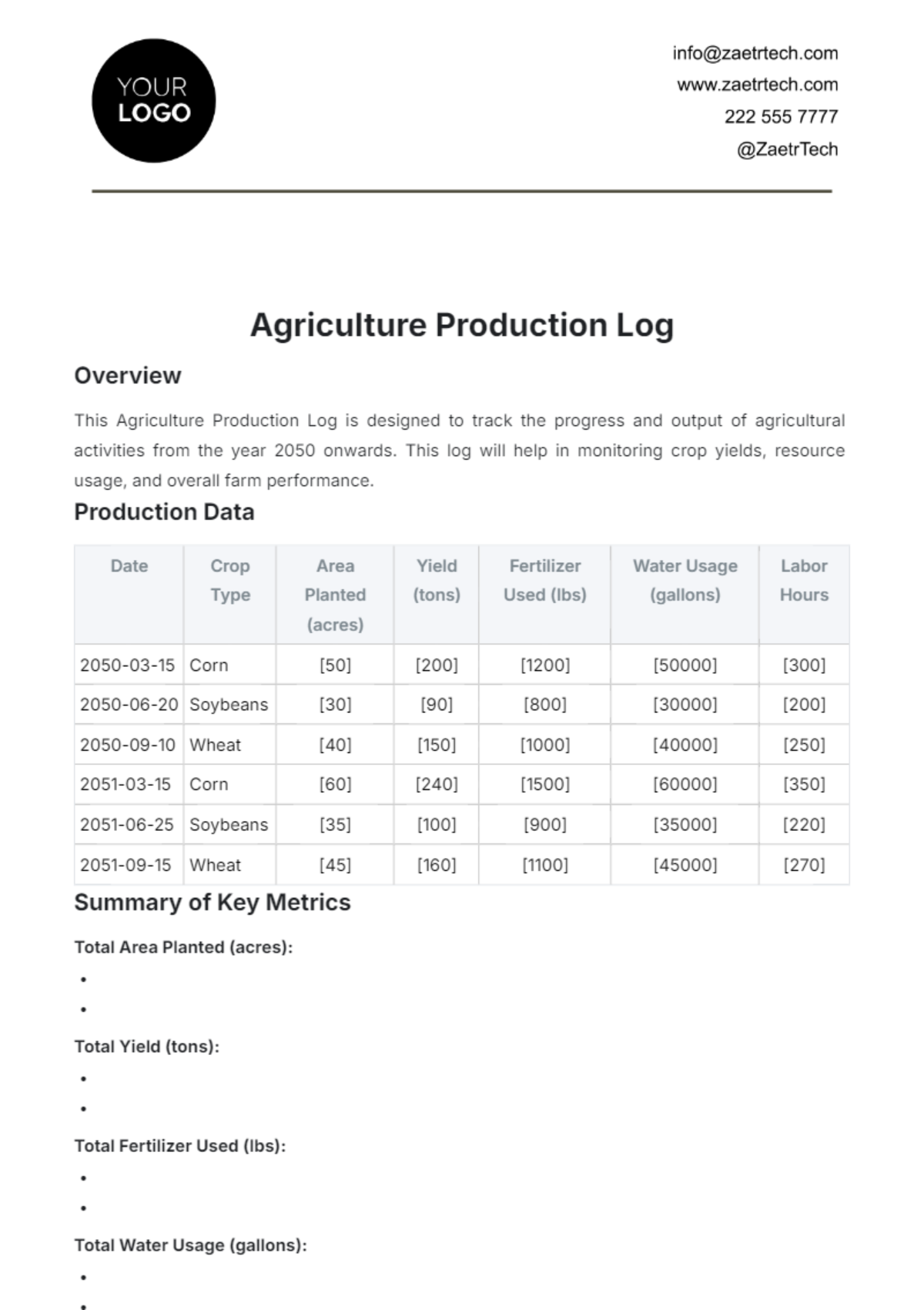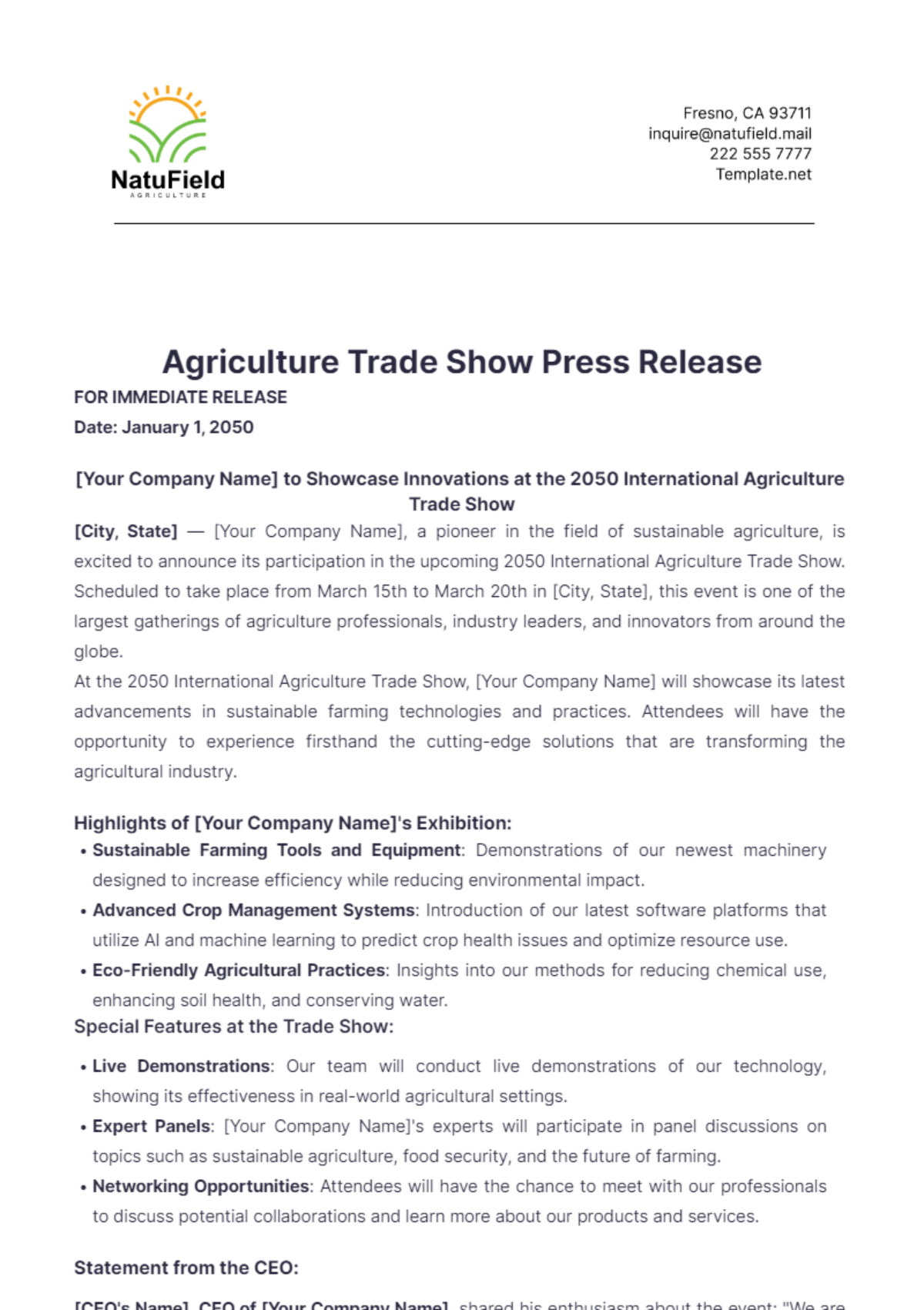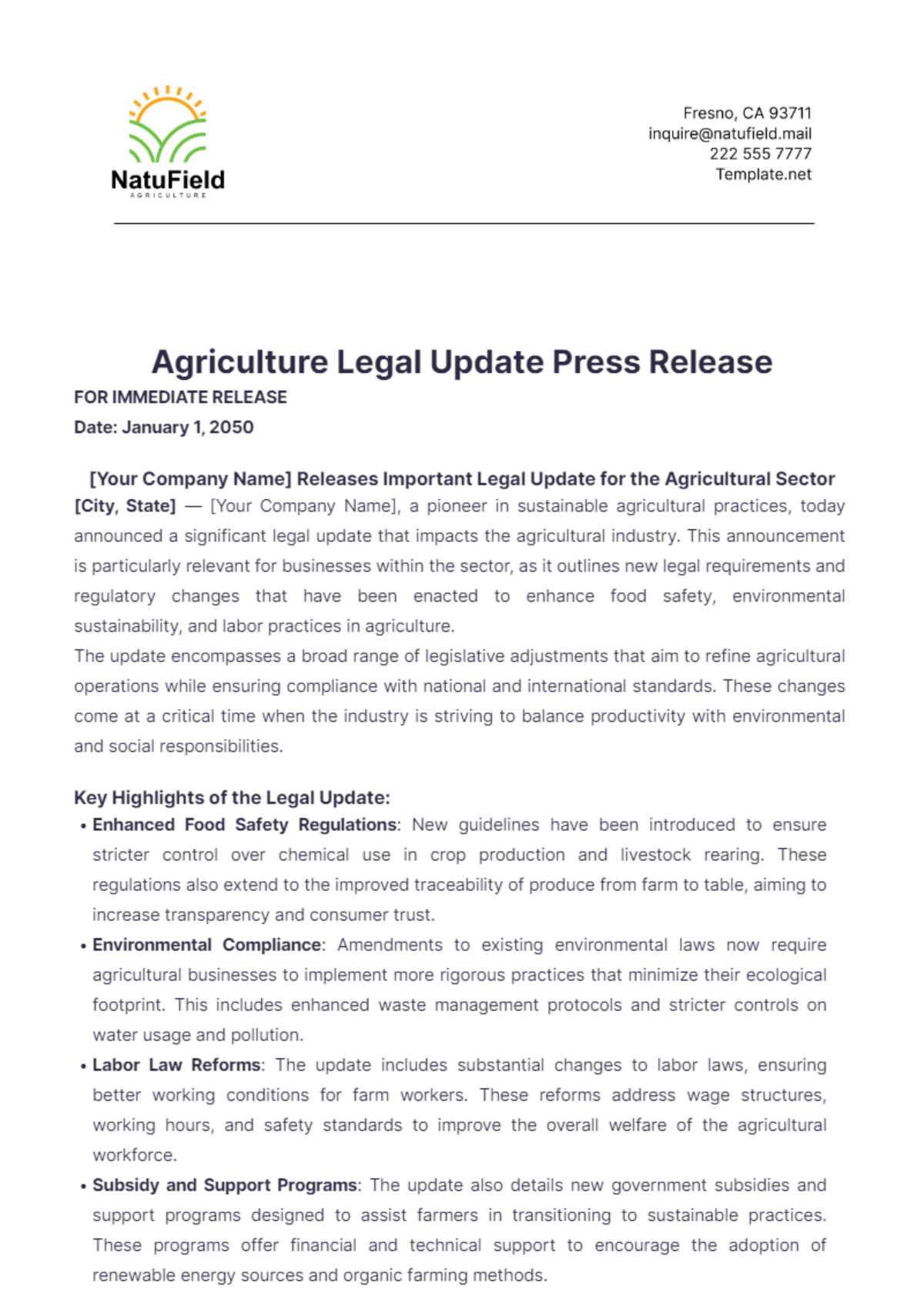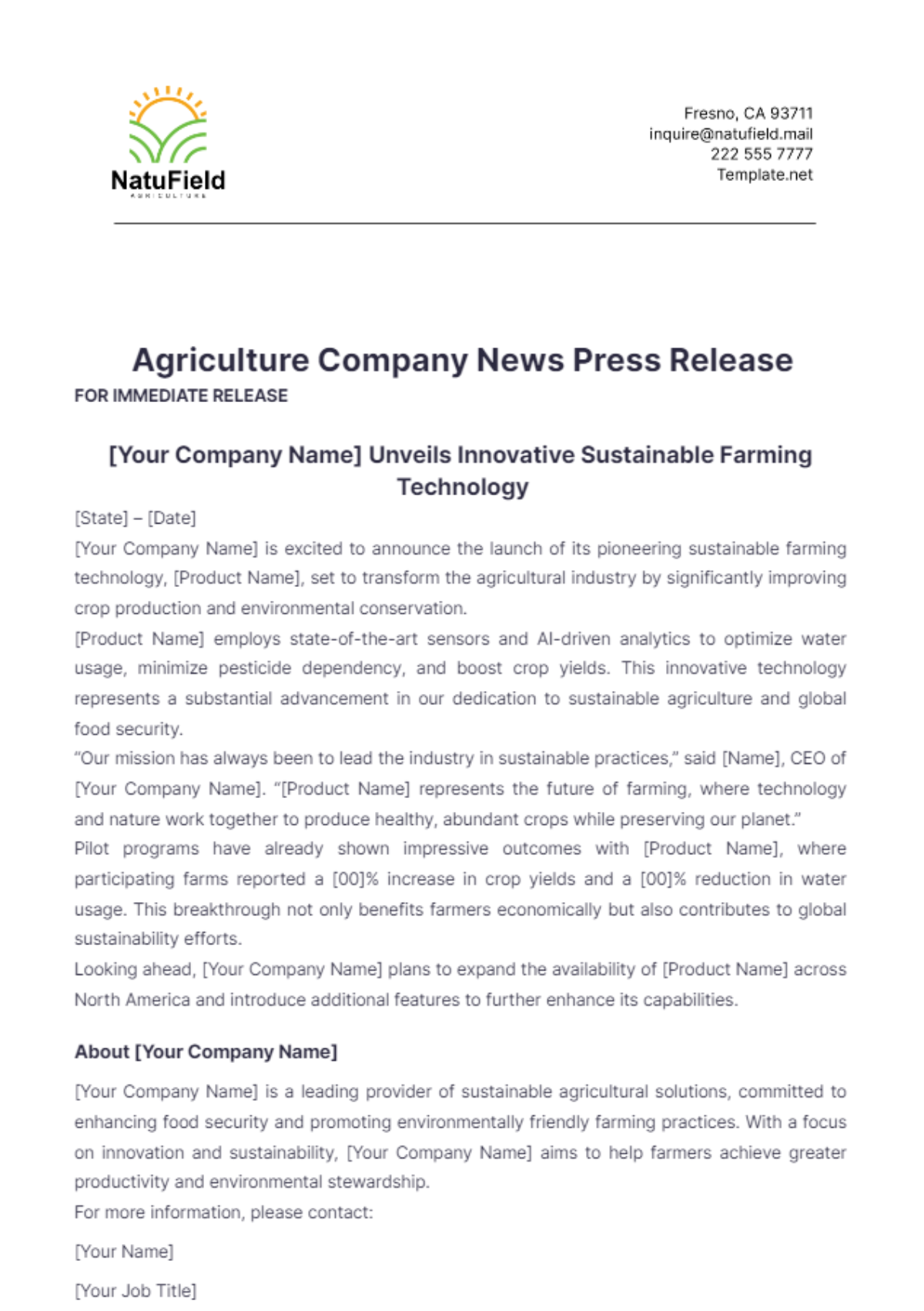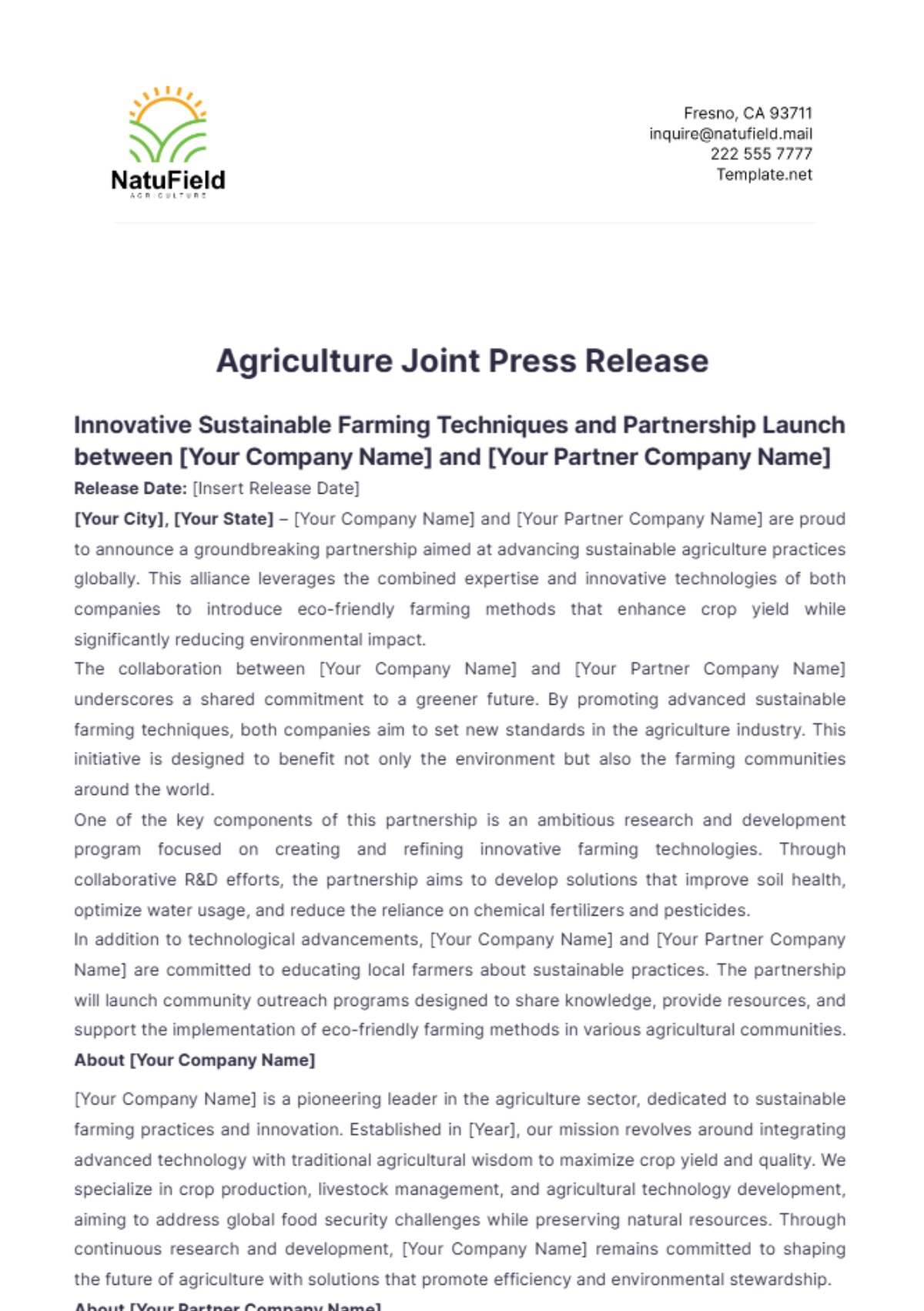Agriculture Green Practices User Guide
I. Introduction
This Agriculture Green Practices User Guide of [Your Company Name] aims to provide clear and actionable guidelines for implementing sustainable and environmentally friendly practices in our agricultural operations. This guide is intended to help all employees understand and follow the green practices that are crucial for reducing our environmental footprint and promoting long-term sustainability.
Sustainable agriculture is vital for maintaining the health of our ecosystems, preserving natural resources, and ensuring the economic viability of our operations. By adhering to the guidelines outlined in this user guide, employees can contribute to reducing waste, conserving water, protecting soil health, and enhancing biodiversity.
This user guide provides detailed instructions and best practices for various aspects of our agricultural operations. Each part includes specific guidelines, procedures, and recommendations to ensure that our agricultural activities align with our commitment to sustainability.
II. Soil Health Management
A. Soil Testing and Monitoring
The following table outlines the steps for soil testing and monitoring:
No. | Step | Description |
|---|---|---|
1 | Sample Collection | Collect soil samples from different field locations. |
2 | Laboratory Testing | Send samples to a certified lab for analysis. |
3 | Data Analysis | Review lab results to determine soil health status. |
4 | Action Plan | Develop a plan to address any identified soil health issues. |
5 | Monitoring Schedule | Establish a regular schedule for ongoing soil monitoring. |
Sample Collection: Collect soil samples from different field locations to get a comprehensive understanding of soil conditions. Use clean tools and containers to avoid contamination.
Laboratory Testing: Send collected samples to a certified laboratory for detailed analysis of soil nutrients, pH levels, and organic matter content. Ensure samples are labeled correctly.
Data Analysis: Review the laboratory results to identify nutrient deficiencies, pH imbalances, or other soil health issues. Use this data to make informed decisions about soil management.
Action Plan: Develop a plan to address any identified soil health issues. This may include adding organic matter, adjusting pH levels, or applying specific nutrients.
Monitoring Schedule: Establish a regular schedule for soil monitoring to track changes over time and adjust management practices as needed. Frequent monitoring helps maintain soil health.
Maintaining soil health is crucial for sustainable agriculture. Healthy soil supports plant growth, retains water more effectively, and reduces the need for chemical fertilizers. By regularly testing and monitoring soil conditions, employees can ensure that the soil remains fertile and productive.
B. Organic Matter Management
Cover Cropping: Use cover crops to enhance soil organic matter, reduce erosion, and improve soil fertility. Select appropriate cover crop species based on the crop rotation plan.
Reduced Tillage: Minimize soil disturbance through reduced tillage practices. Reduced tillage helps maintain soil structure and microbial activity.
Crop Residue Management: Leave crop residues on the field to decompose naturally. Residues add organic matter to the soil and protect against erosion.
Mulching: Apply organic mulches to conserve soil moisture, suppress weeds, and add organic matter. Mulching also helps regulate soil temperature.
Organic matter management is essential for improving soil fertility and structure. By incorporating organic materials into the soil, employees can enhance soil health and support sustainable crop production.
III. Water Conservation
A. Efficient Irrigation Techniques
The following table outlines efficient irrigation techniques:
No. | Technique | Description |
|---|---|---|
1 | Scheduling | Water crops based on soil moisture levels and crop needs. |
2 | Mulching | Reduces evaporation and retains soil moisture. |
3 | Rainwater Harvesting | Collects and stores rainwater for irrigation use. |
4 | Soil Moisture Sensors | Monitors soil moisture to optimize irrigation timing. |
Scheduling: Schedule irrigation based on soil moisture levels and crop needs. Use weather forecasts and soil moisture data to determine the optimal timing for irrigation.
Mulching: Apply mulch to the soil surface to reduce evaporation, retain soil moisture, and suppress weed growth. Mulch also helps maintain soil temperature.
Rainwater Harvesting: Install systems to collect and store rainwater for irrigation use. Rainwater harvesting reduces reliance on groundwater and surface water sources.
Soil Moisture Sensors: Use soil moisture sensors to monitor soil moisture levels and adjust irrigation schedules accordingly. Sensors provide real-time data for precise irrigation management.
Efficient irrigation techniques are vital for conserving water resources and ensuring that crops receive adequate water without waste. By using these techniques, employees can optimize water use and contribute to sustainable water management.
B. Water Recycling
Greywater Use: Utilize greywater from non-potable sources for irrigation purposes. Ensure greywater is properly treated to prevent contamination.
Recycling Systems: Install water recycling systems to capture and reuse water within the facility. Recycling reduces overall water consumption.
Irrigation Runoff Capture: Capture and recycle irrigation runoff to minimize water loss. Use runoff capture systems to collect and reuse water.
Treatment and Reuse: Treat wastewater from agricultural processes for reuse in irrigation or other non-potable applications. Treatment ensures water quality.
Monitoring and Maintenance: Regularly monitor and maintain water recycling systems to ensure their effectiveness. Proper maintenance prevents system failures.
Water recycling is an effective way to reduce water consumption and manage water resources sustainably. By reusing water, employees can minimize waste and support the efficient use of water in agricultural operations.
IV. Energy Efficiency
A. Renewable Energy Sources
The following table outlines renewable energy sources for agricultural use:
No. | Source | Description |
|---|---|---|
1 | Wind Power | Uses wind turbines to produce electricity. |
2 | Biomass Energy | Converts organic materials into energy. |
3 | Geothermal Energy | Utilizes heat from the earth for heating and electricity. |
4 | Hydroelectric Power | Generates electricity from flowing water. |
Wind Power: Use wind turbines to capture wind energy and produce electricity. Wind power is sustainable and can significantly reduce energy costs.
Biomass Energy: Convert organic materials, such as crop residues and animal waste, into energy through biomass systems. Biomass energy is renewable and helps manage waste.
Geothermal Energy: Utilize geothermal systems to tap into the earth's heat for heating and electricity. Geothermal energy is reliable and environmentally friendly.
Hydroelectric Power: Generate electricity from flowing water using hydroelectric systems. Hydroelectric power is renewable and provides a consistent energy source.
B. Energy Conservation Practices
Energy Audits: Conduct regular energy audits to identify areas where energy consumption can be reduced. Audits provide insights for improving energy efficiency.
Smart Controls: Implement smart controls and automation systems to optimize energy use. Smart controls adjust energy consumption based on demand.
Employee Training: Train employees on energy conservation practices and the importance of energy efficiency. Educated employees are more likely to adopt energy-saving behaviors.
Energy efficiency is crucial for reducing operational costs and minimizing environmental impact. By adopting renewable energy sources and implementing energy conservation practices, employees can contribute to a more sustainable agricultural operation.
V. Waste Management
A. Waste Reduction Strategies
The following table outlines waste reduction strategies:
No. | Strategy | Description |
|---|---|---|
1 | Source Reduction | Minimize waste generation at the source. |
2 | Composting | Convert organic waste into compost. |
3 | Waste Segregation | Separate waste into different categories for proper disposal. |
4 | Supplier Collaboration | Work with suppliers to reduce packaging waste. |
Source Reduction: Implement practices to minimize waste generation at the source. This can include optimizing production processes and using materials efficiently.
Composting: Convert organic waste into compost through composting programs. Composting reduces waste and produces valuable soil amendments.
Waste Segregation: Separate waste into different categories, such as recyclables, compostable, and non-recyclables, for proper disposal. Segregation facilitates efficient waste management.
Supplier Collaboration: Work with suppliers to reduce packaging waste and encourage the use of sustainable materials. Collaboration can lead to reduced waste generation.
B. Waste Disposal Practices
Waste Tracking: Use waste tracking systems to monitor waste generation and disposal. Tracking helps identify areas for improvement.
Landfill Diversion: Aim to divert as much waste as possible from landfills through recycling and composting programs. Landfill diversion reduces environmental impact.
Employee Training: Train employees on proper waste disposal practices and the importance of waste management. Educated employees are more likely to follow waste management protocols.
Effective waste management is essential for reducing environmental impact and promoting sustainability. By implementing waste reduction strategies and proper disposal practices, employees can contribute to a cleaner and more sustainable agricultural operation.
VI. Sustainable Crop Production
A. Integrated Pest Management (IPM)
The following table outlines Integrated Pest Management (IPM) strategies:
No. | Strategy | Description |
|---|---|---|
1 | Biological Control | Use natural predators to control pests. |
2 | Cultural Practices | Implement crop rotation and other cultural practices to manage pests. |
3 | Mechanical Control | Use physical methods, such as traps, to control pests. |
4 | Chemical Control | Apply pesticides judiciously and only when necessary. |
5 | Monitoring | Regularly monitor pest populations to identify issues early. |
Biological Control: Utilize natural predators and beneficial insects to control pest populations. Biological control reduces the need for chemical pesticides.
Cultural Practices: Implement crop rotation, intercropping, and other cultural practices to manage pests and diseases. These practices disrupt pest life cycles.
Mechanical Control: Use physical methods, such as traps, barriers, and hand-picking, to control pests. Mechanical control is a non-chemical approach to pest management.
Chemical Control: Apply pesticides judiciously and only when necessary. Select pesticides that are least harmful to the environment and follow label instructions.
Monitoring: Regularly monitor pest populations to detect issues early and take appropriate action. Monitoring helps prevent pest outbreaks and reduces pesticide use.
B. Sustainable Fertilization Practices
Soil Testing: Conduct soil tests to determine nutrient needs and avoid over-fertilization. Soil testing ensures the efficient use of fertilizers.
Organic Fertilizers: Use organic fertilizers, such as compost and manure, to improve soil fertility. Organic fertilizers are environmentally friendly and enhance soil health.
Precision Fertilization: Apply fertilizers based on crop needs and soil conditions. Precision fertilization reduces waste and environmental impact.
Nutrient Management Plans: Develop nutrient management plans to optimize fertilizer use. Plans should consider crop requirements, soil tests, and environmental factors.
Cover Crops: Use cover crops to add nutrients to the soil and reduce the need for synthetic fertilizers. Cover crops improve soil health and fertility.
Sustainable crop production practices are essential for maintaining soil fertility, managing pests, and reducing environmental impact. By adopting these practices, employees can support the long-term sustainability of our agricultural operations.
VII. Biodiversity Enhancement
A. Habitat Conservation
Native Plantings: Use native plants in landscaping and conservation areas. Native plants support local wildlife and are adapted to the local environment.
Pollinator Habitats: Establish habitats to support pollinators, such as bees and butterflies. Pollinator habitats enhance biodiversity and support crop production.
Wetland Restoration: Restore and protect wetland areas to enhance biodiversity and provide ecosystem services. Wetlands support a wide range of plant and animal species.
B. Biodiversity Monitoring
Species Surveys: Conduct regular surveys to monitor plant and animal species on the farm. Surveys help track changes in biodiversity.
Habitat Assessments: Assess the condition of habitats and identify areas for improvement. Habitat assessments guide conservation efforts.
Citizen Science Programs: Engage employees and the community in biodiversity monitoring through citizen science programs. Participation increases awareness and data collection.
Biodiversity Indicators: Use biodiversity indicators, such as species richness and abundance, to measure the health of ecosystems. Indicators provide insights into biodiversity trends.
Enhancing biodiversity is critical for maintaining ecosystem health and resilience. By implementing habitat conservation and biodiversity monitoring strategies, employees can contribute to the protection and enhancement of biodiversity on our agricultural lands.
VIII. Review and Update
A. Review
This Agriculture Green Practices User Guide will undergo a comprehensive review annually to ensure its continued relevance and effectiveness. The review process will involve gathering feedback from employees at all levels to identify areas for improvement and address any challenges encountered in implementing the practices. Additionally, the review will include an assessment of the latest advancements in sustainable agriculture and changes in regulatory requirements. By conducting regular reviews, [Your Company Name] ensures that the guide reflects the most current and effective green practices, thereby supporting our commitment to sustainability.
B. Update
Following the review, necessary updates will be made to the guide to incorporate new information, practices, and technologies. The updates will be communicated to all employees through training sessions, workshops, and internal communications to ensure everyone is aware of the changes and understands how to implement them. It is essential that the guide remains a dynamic document, evolving to meet the needs of our agricultural operations and environmental goals. Continuous updates ensure that [Your Company Name] stays at the forefront of sustainable agriculture, fostering a culture of continuous improvement and environmental stewardship.
